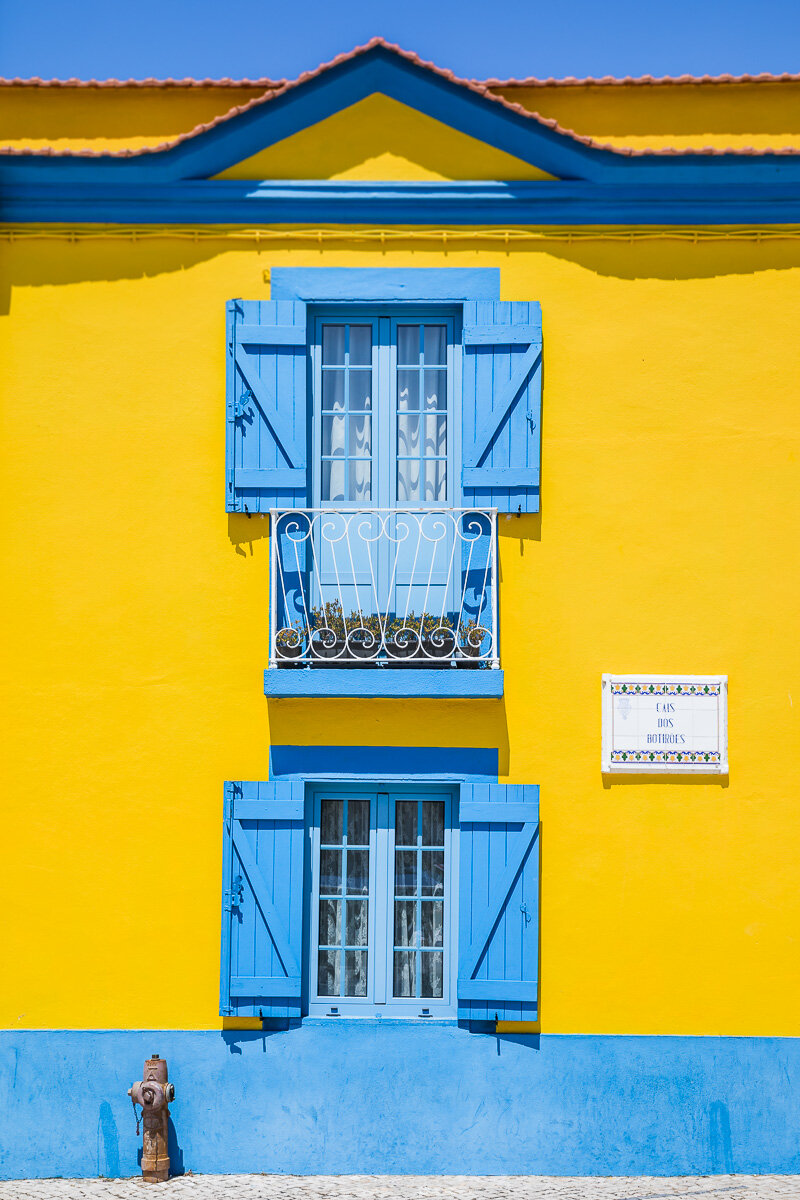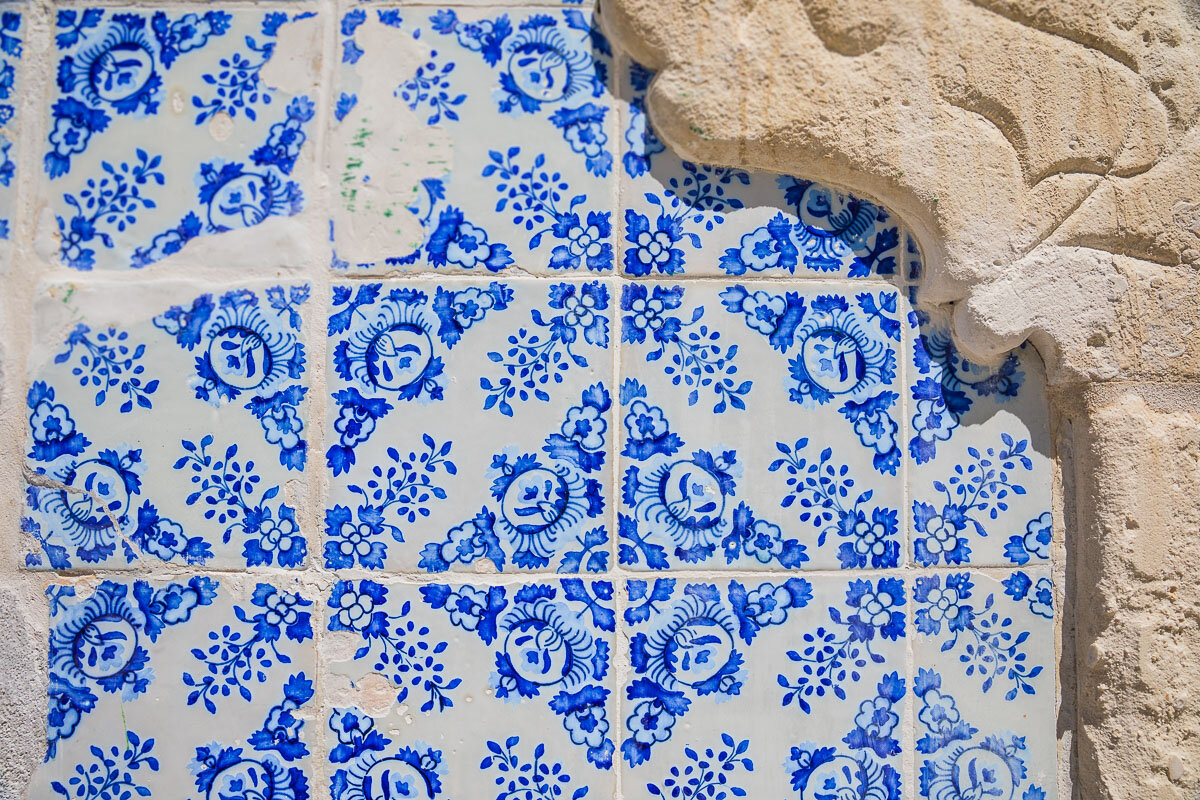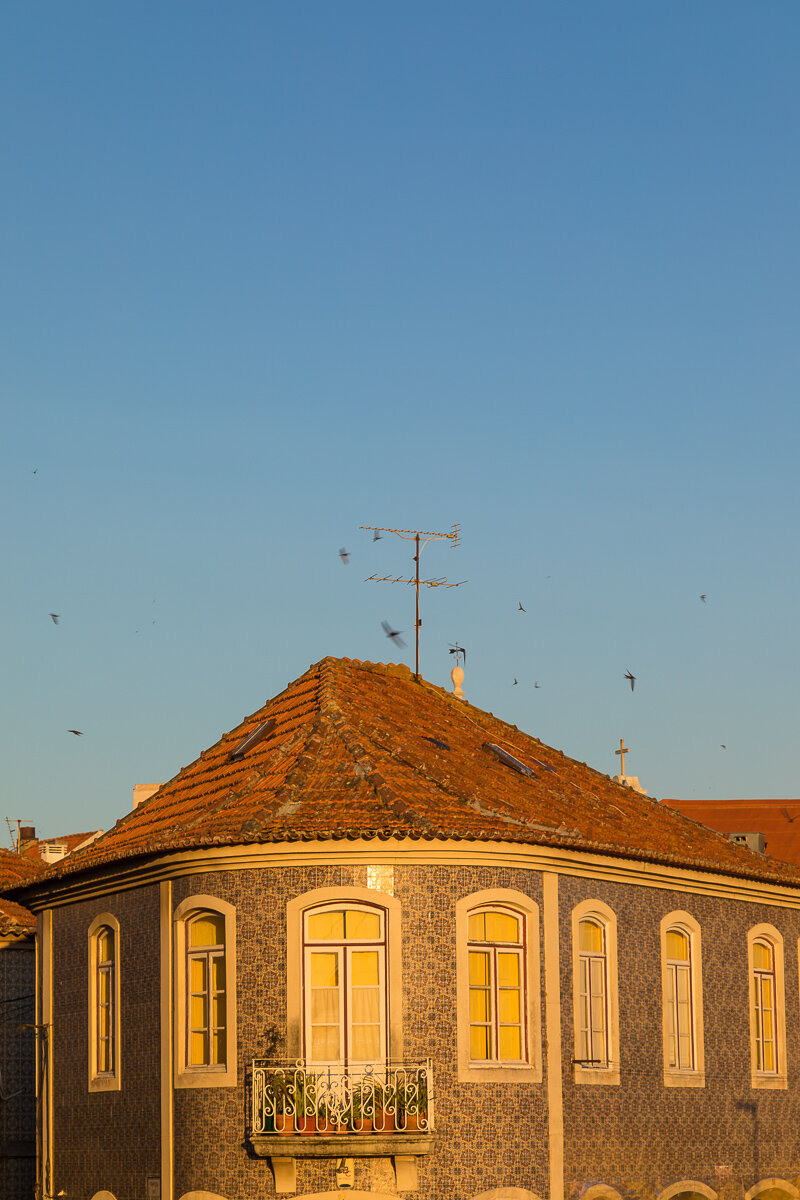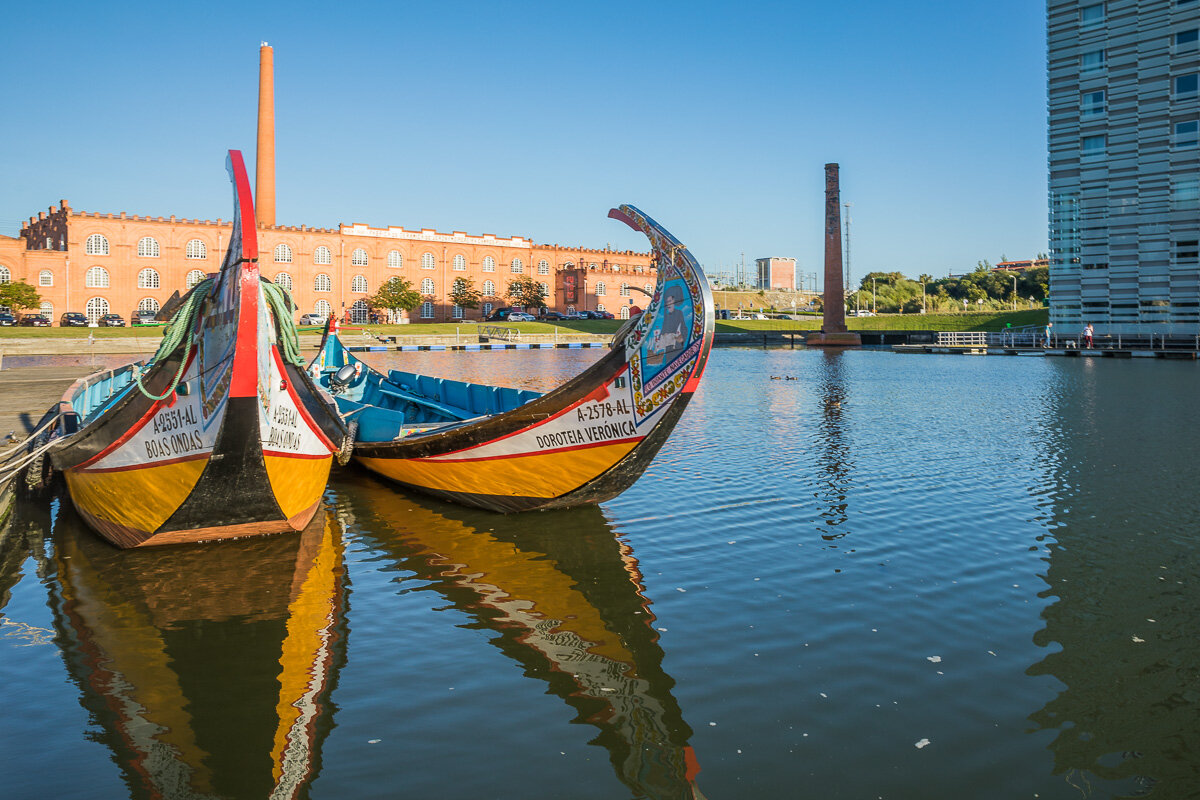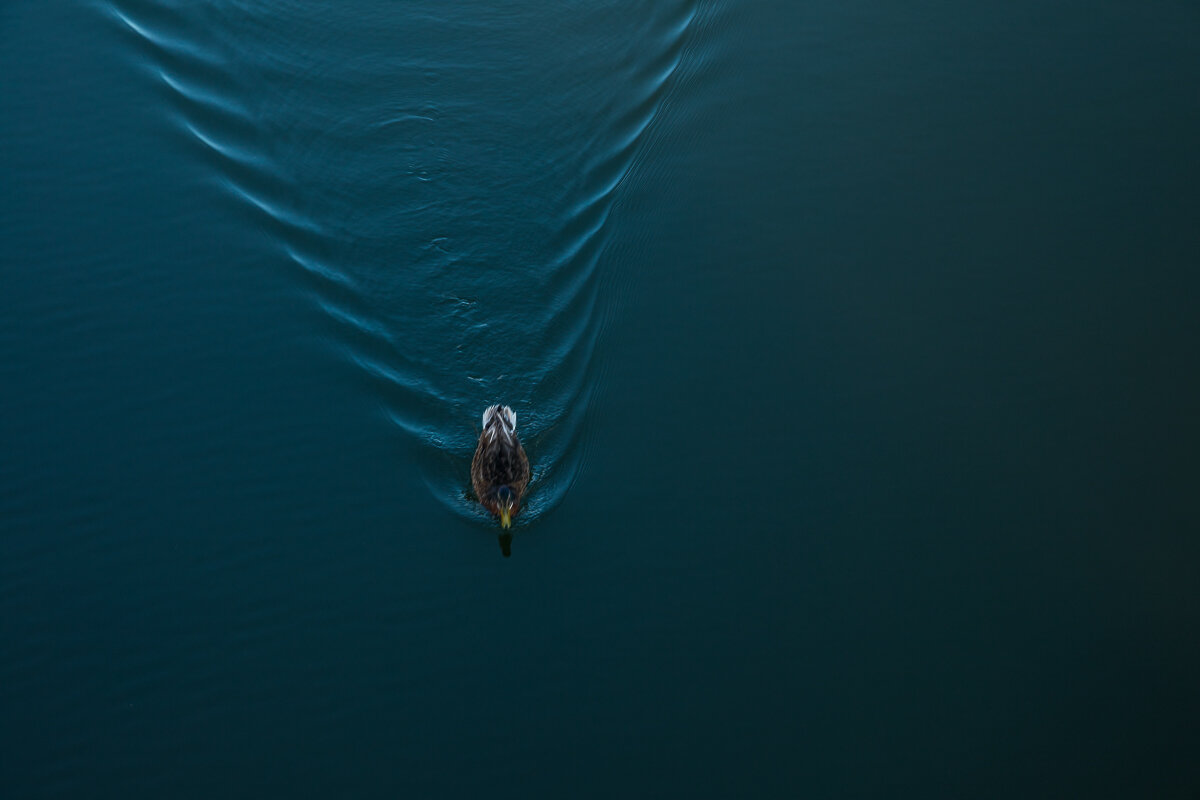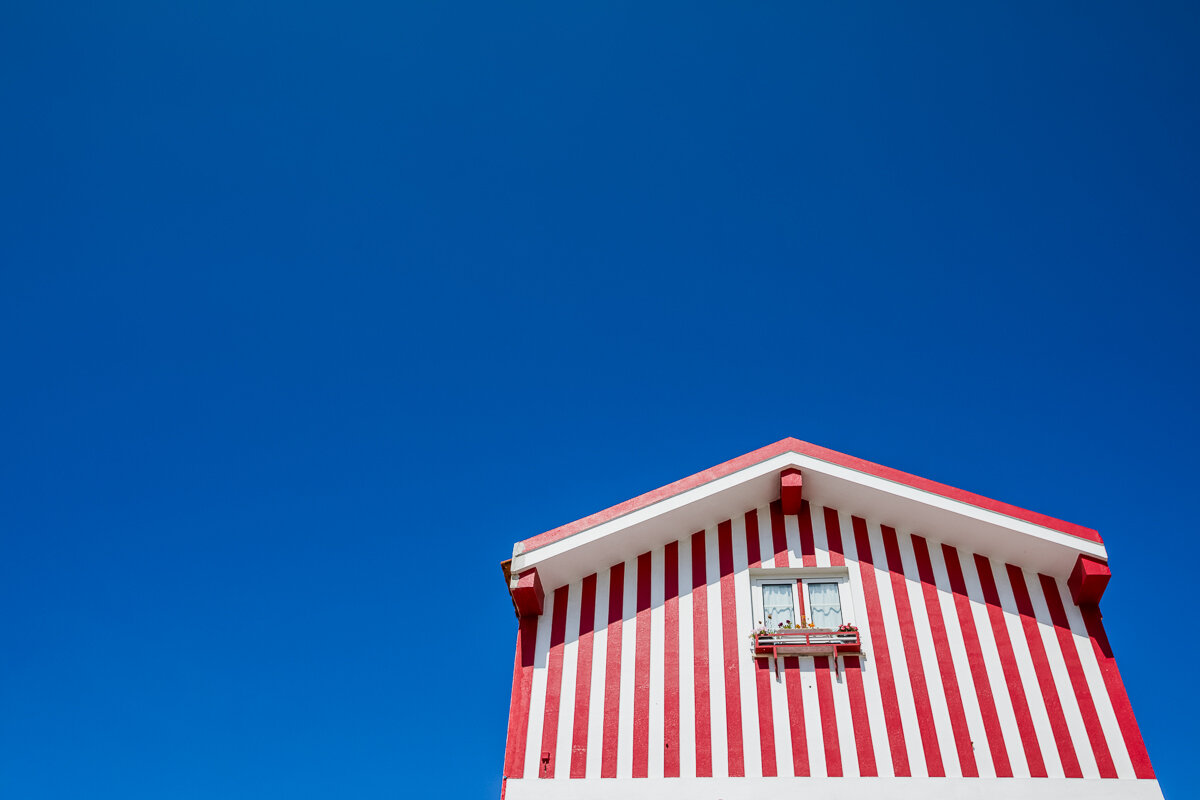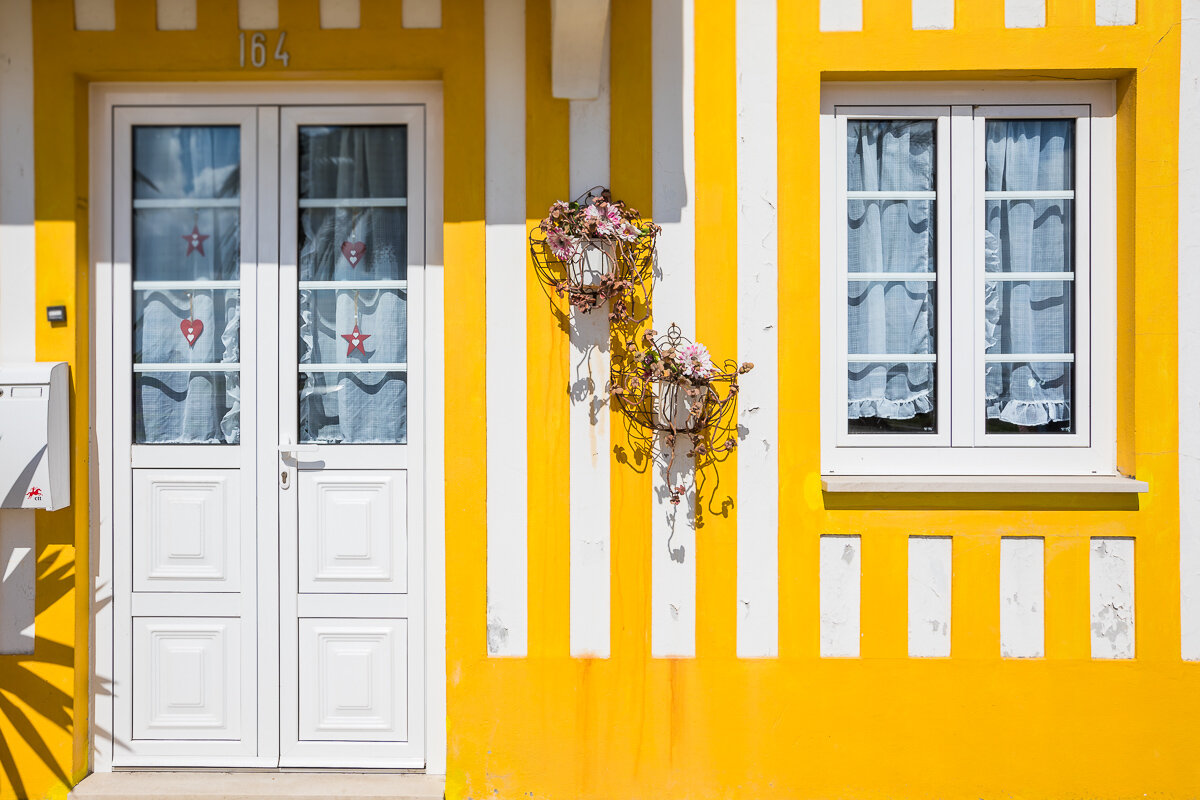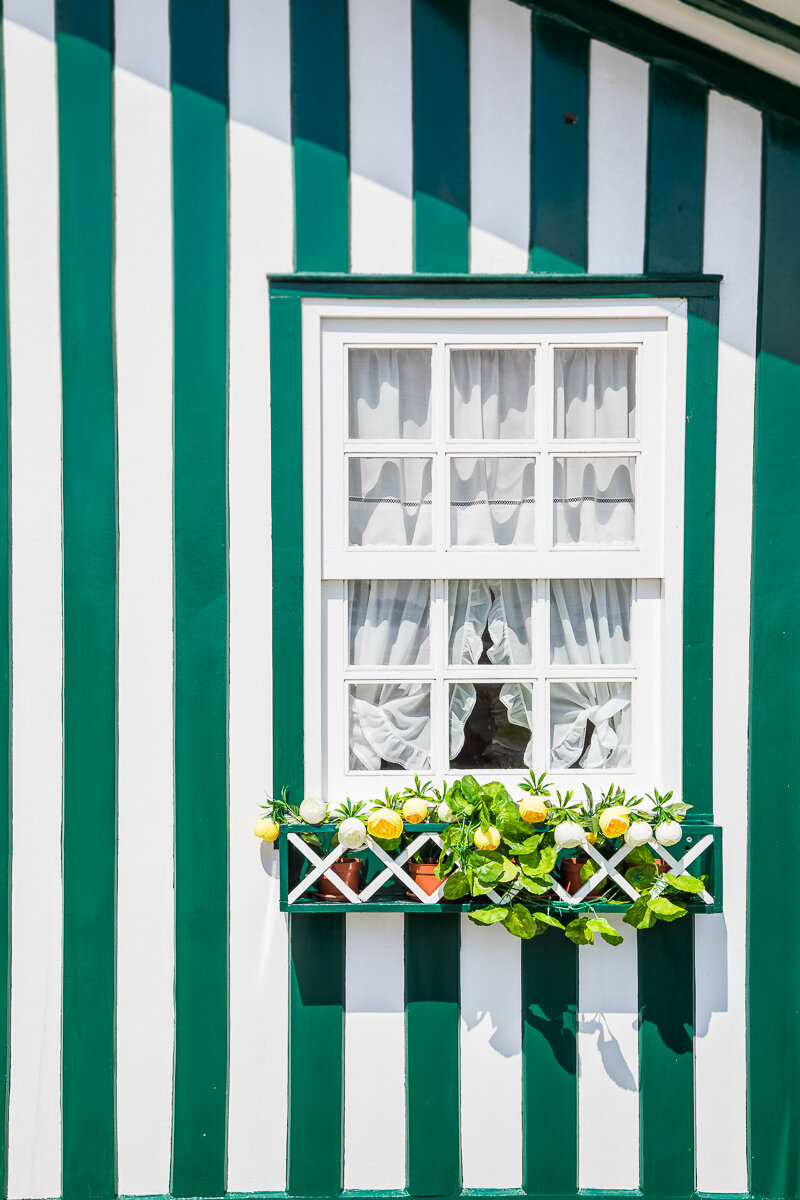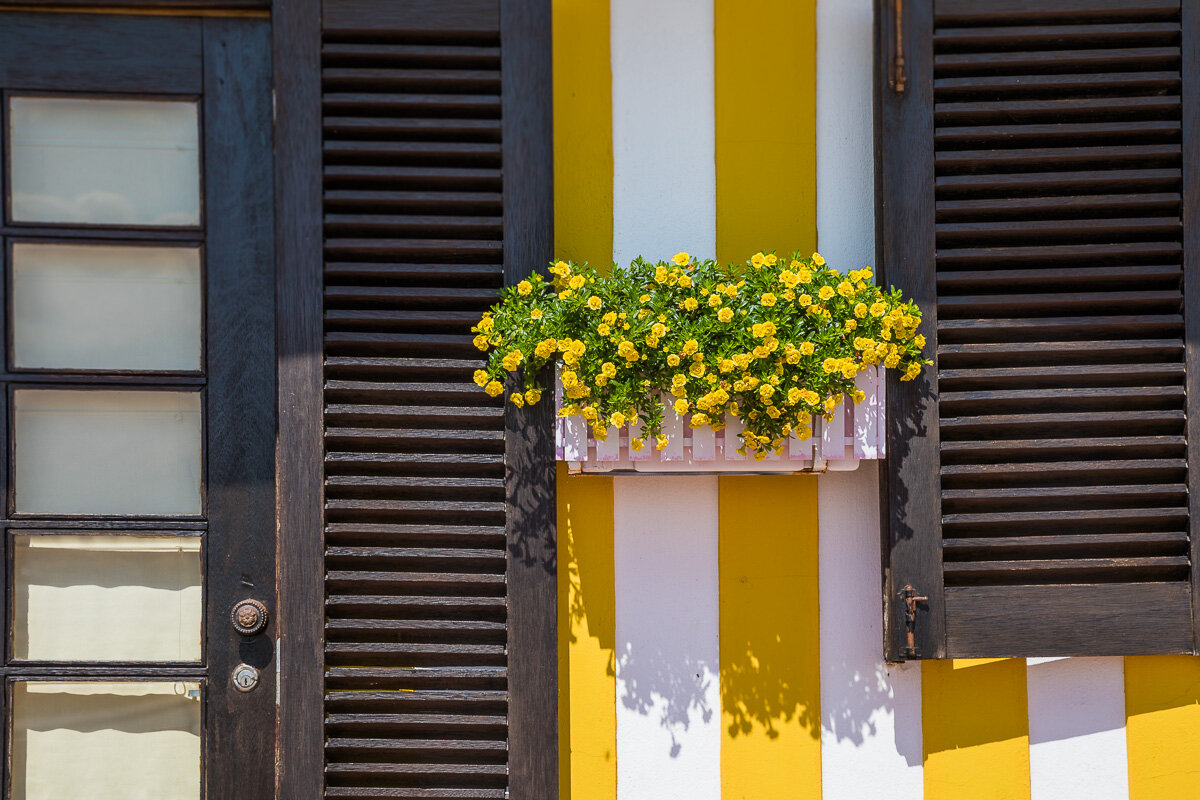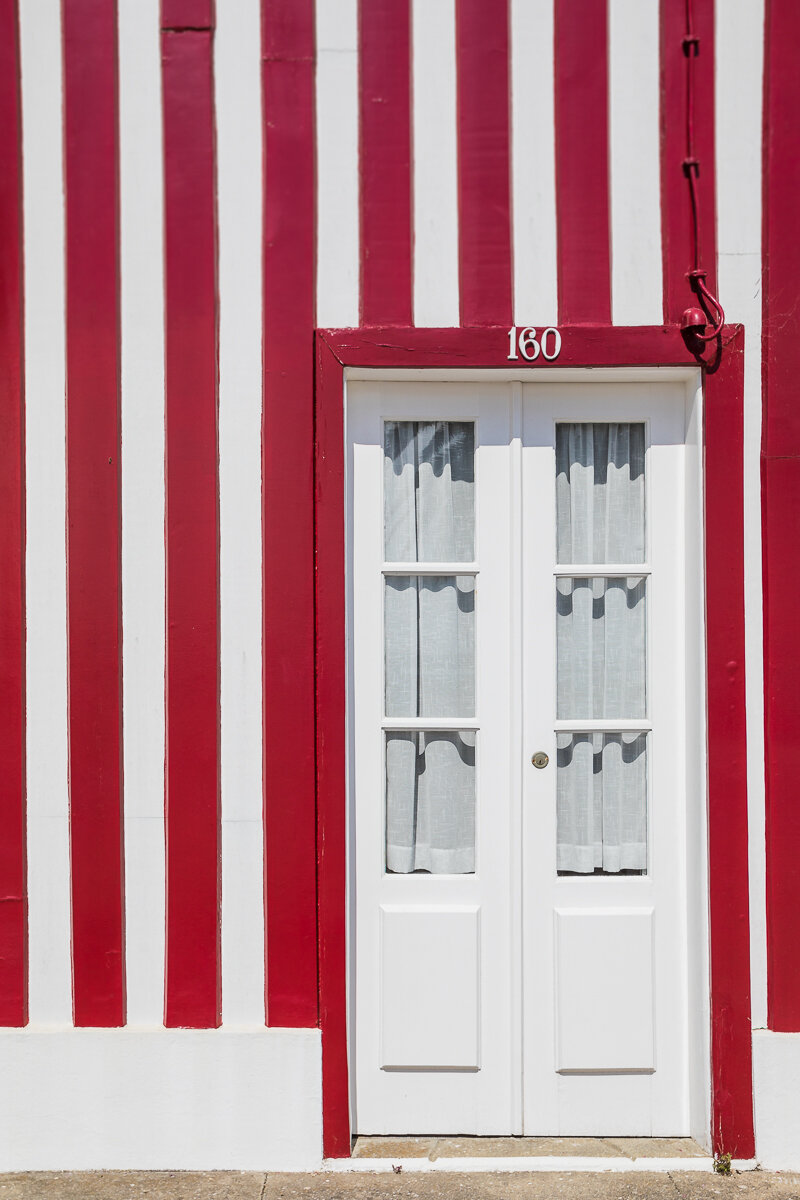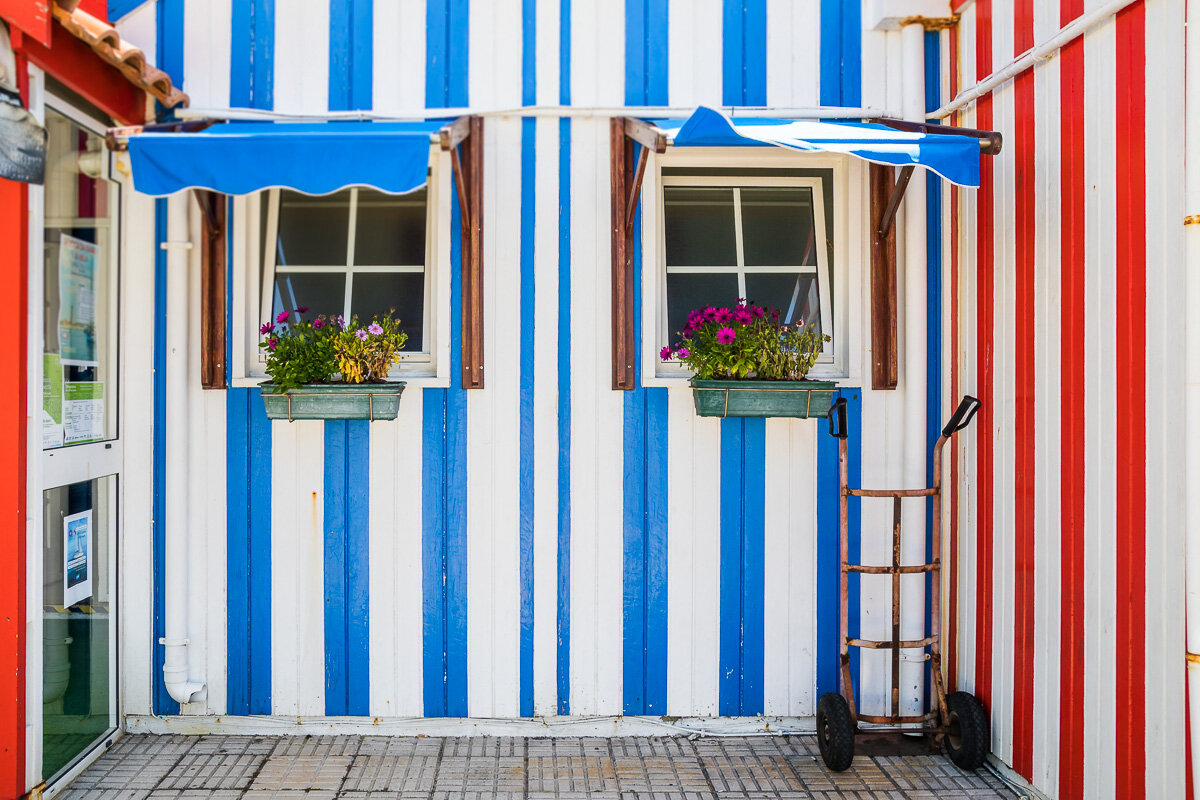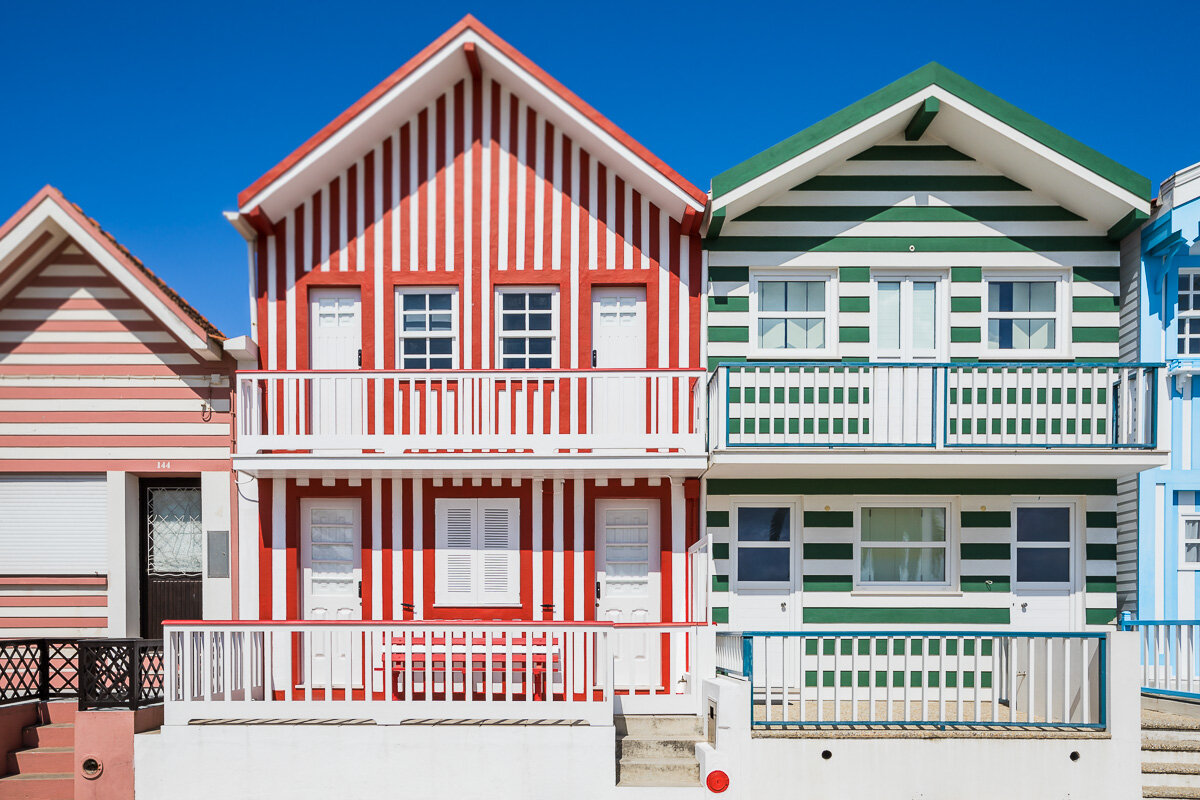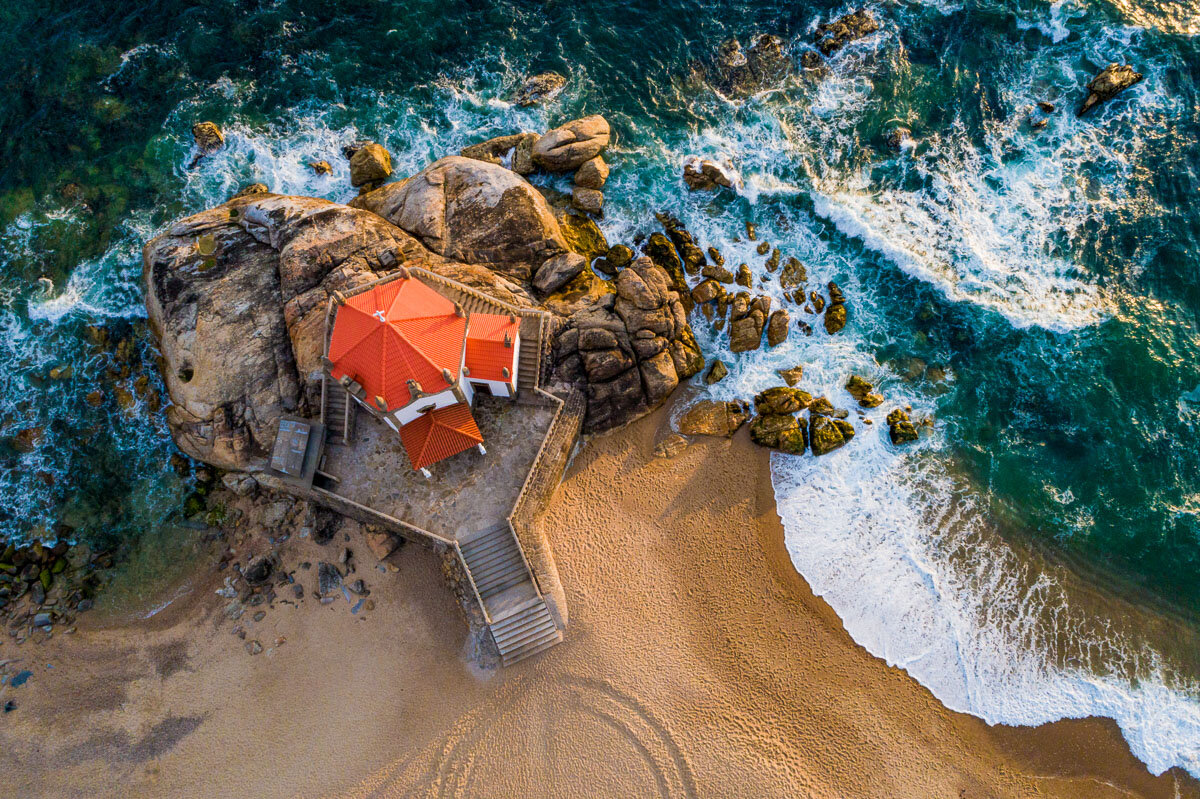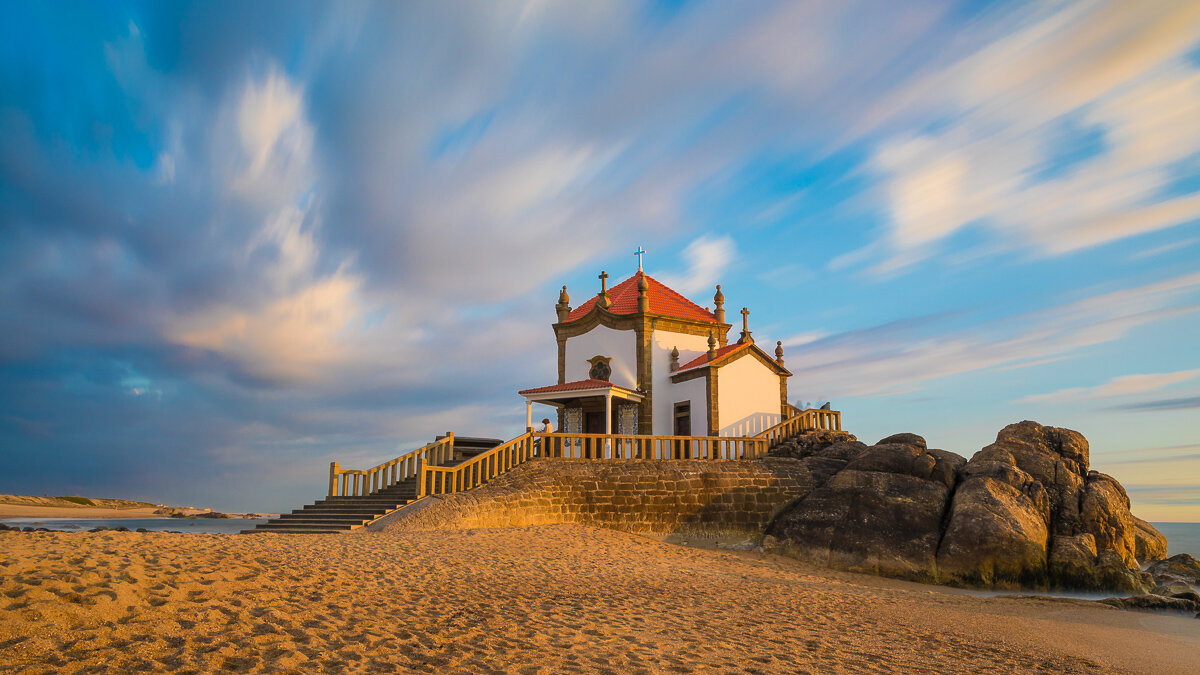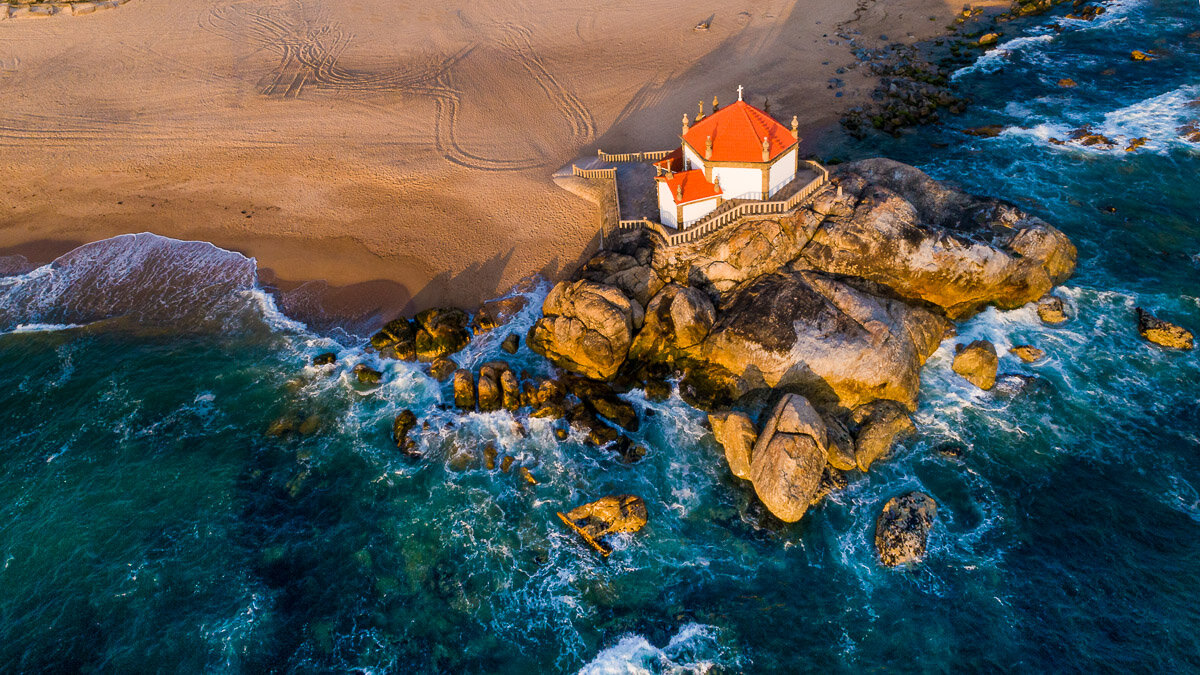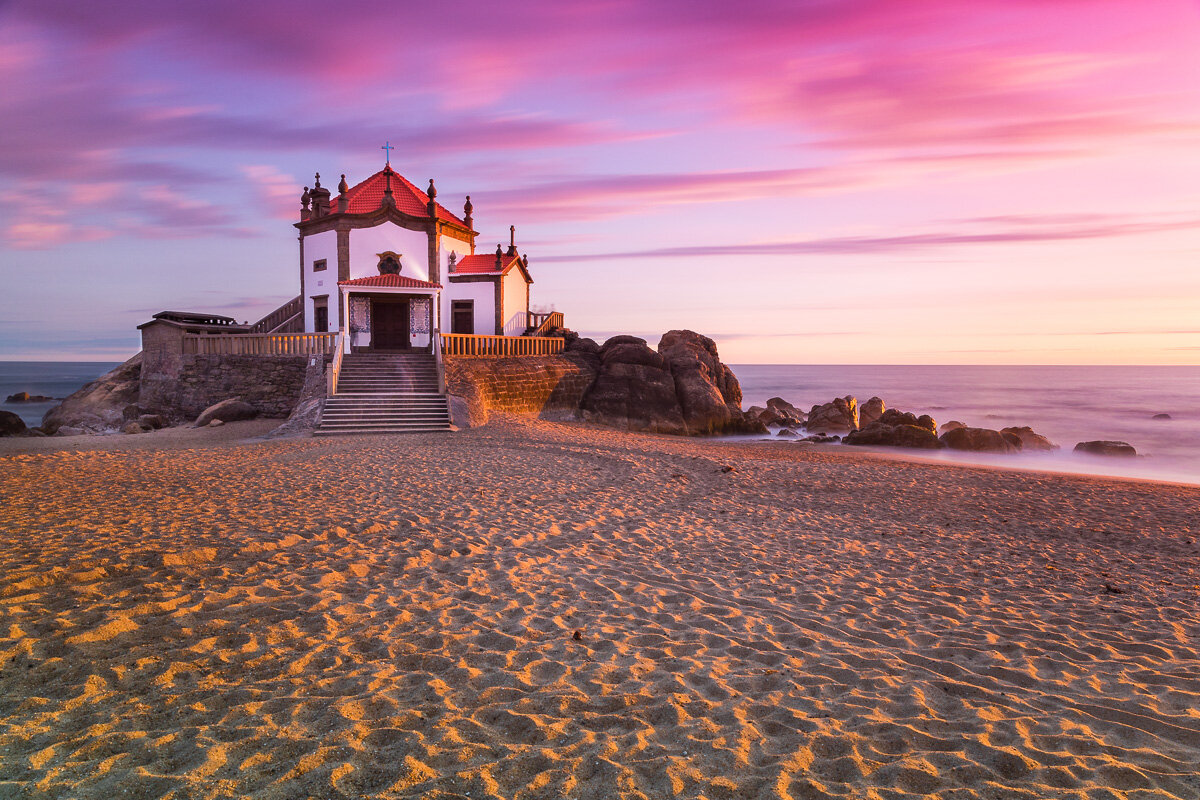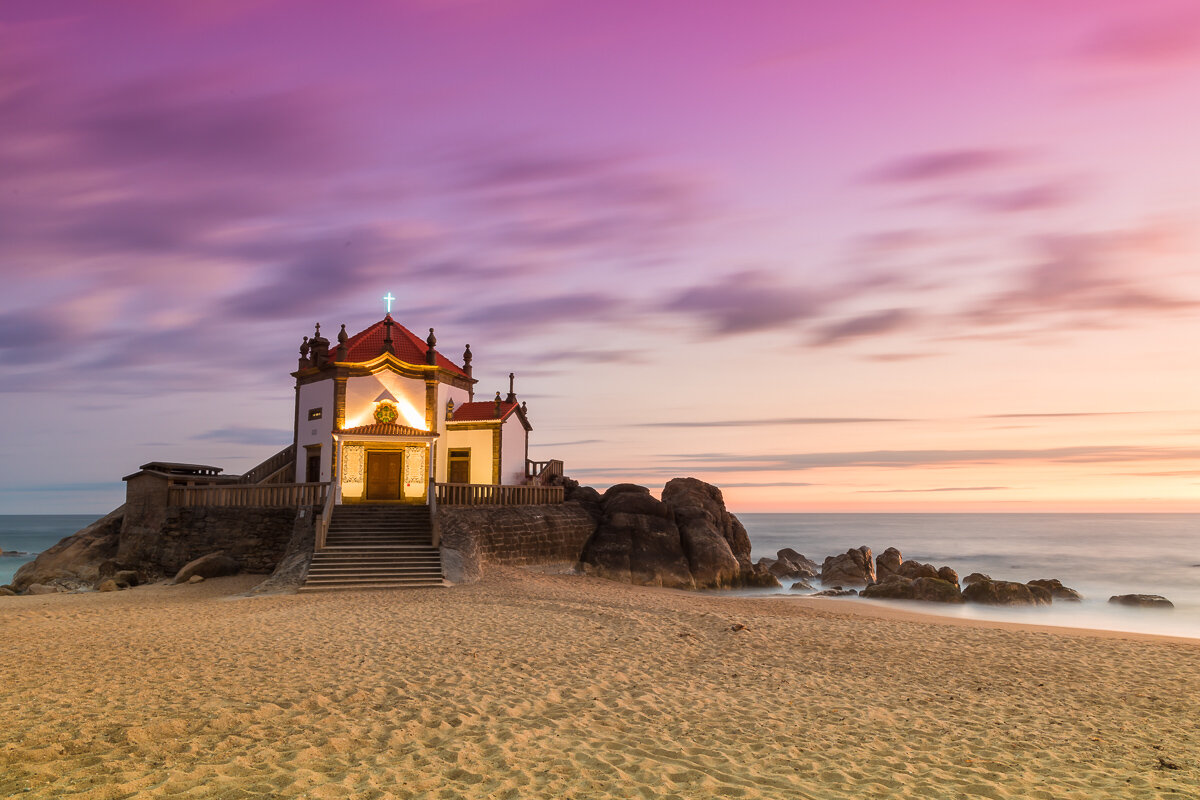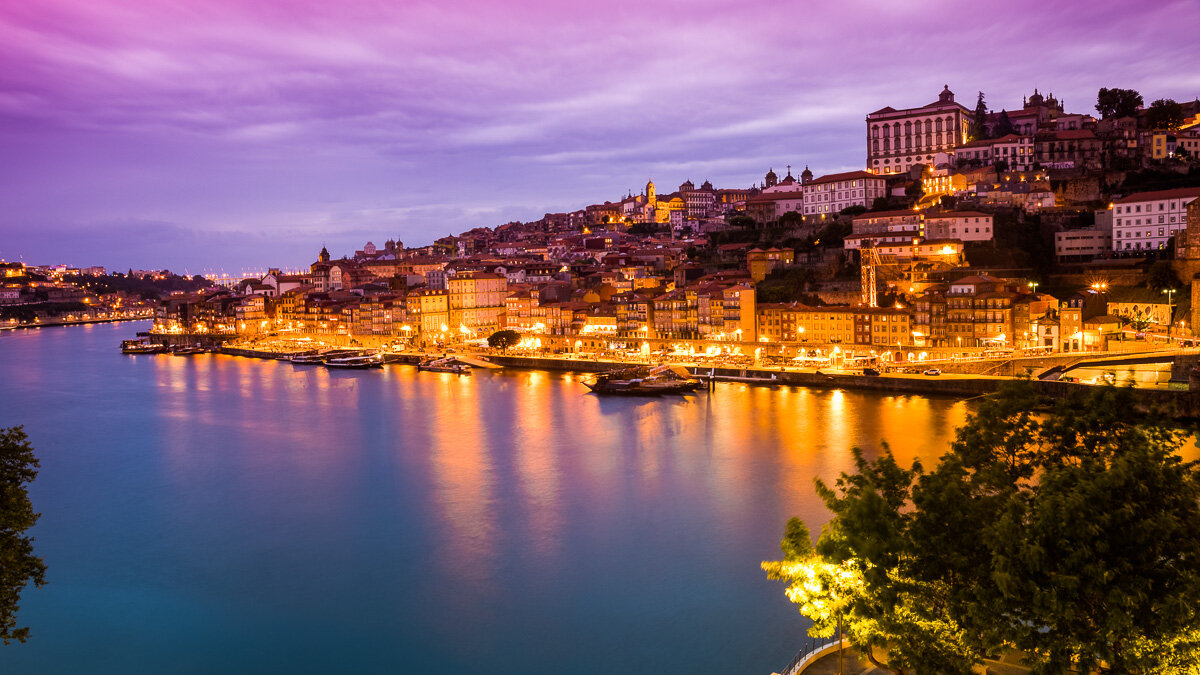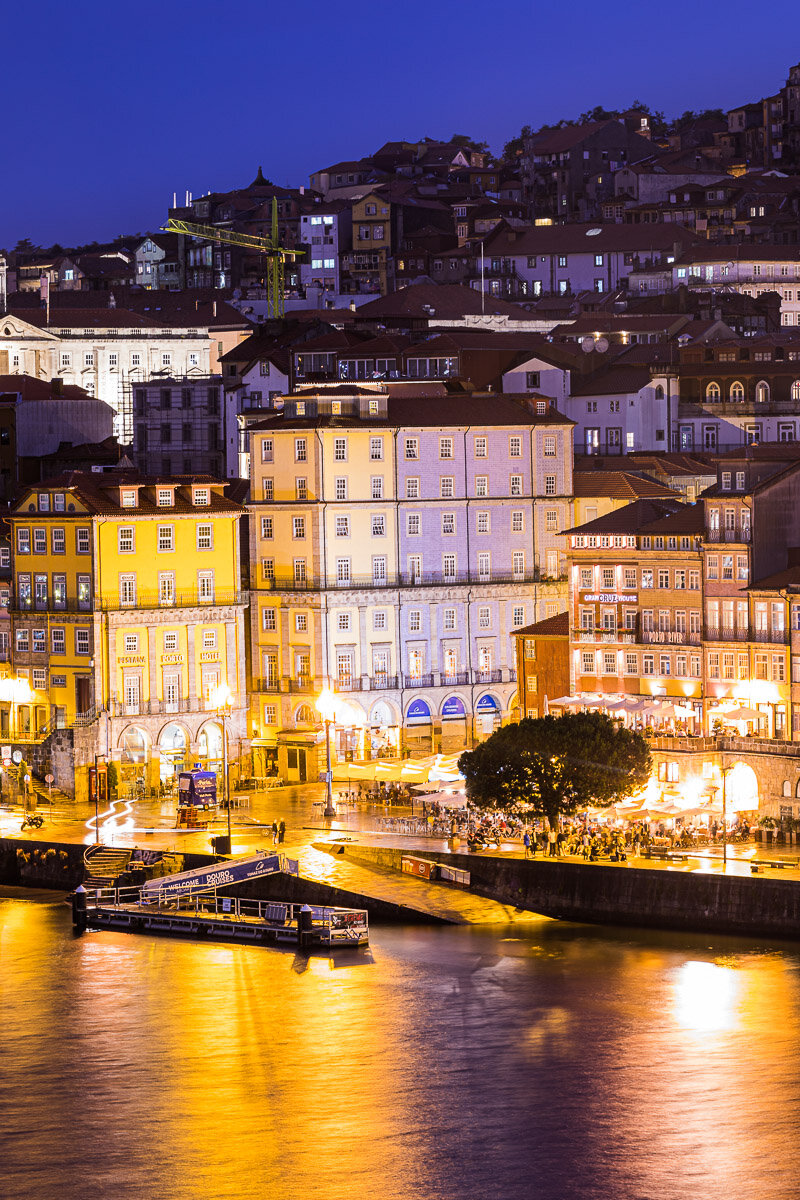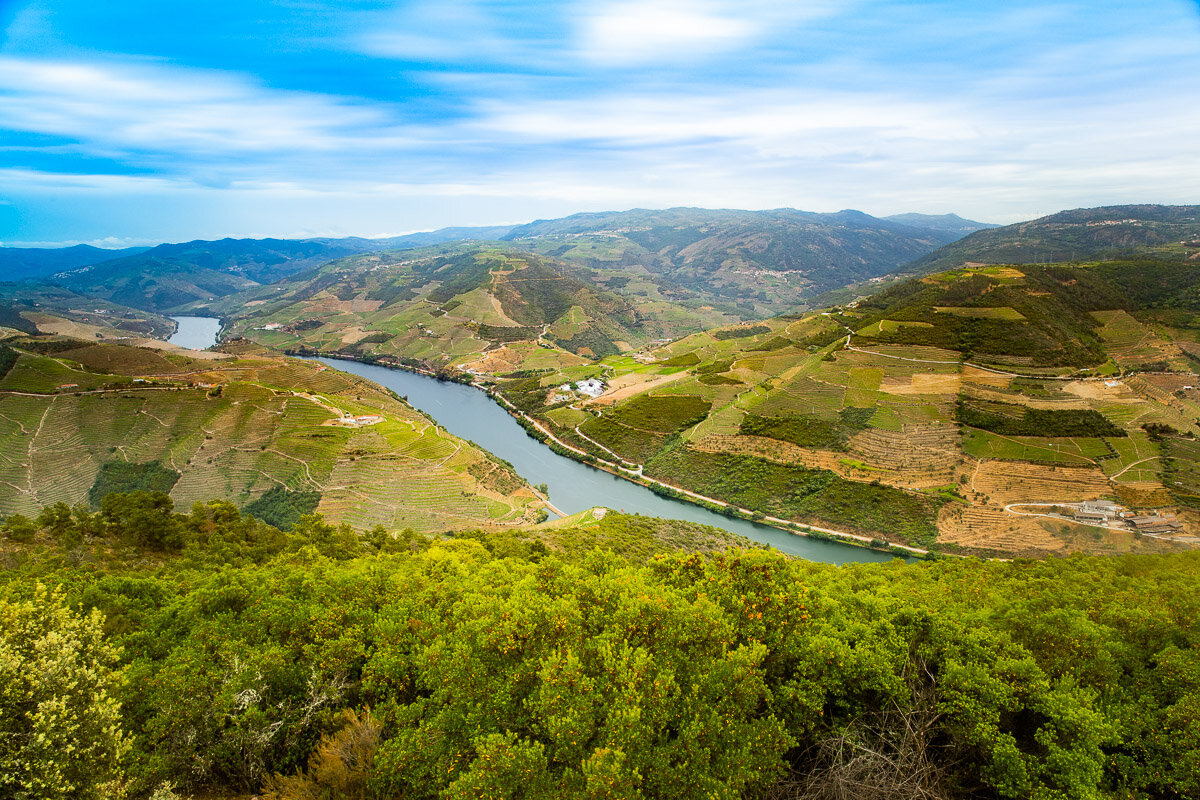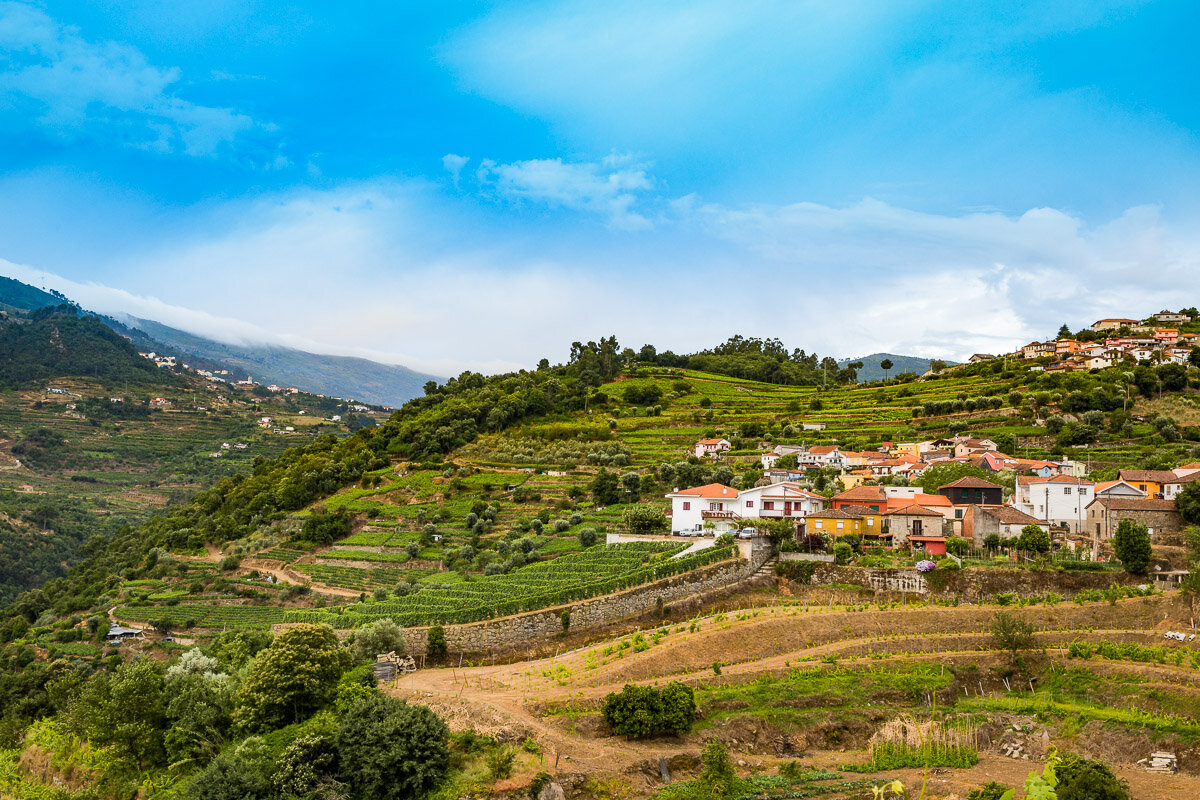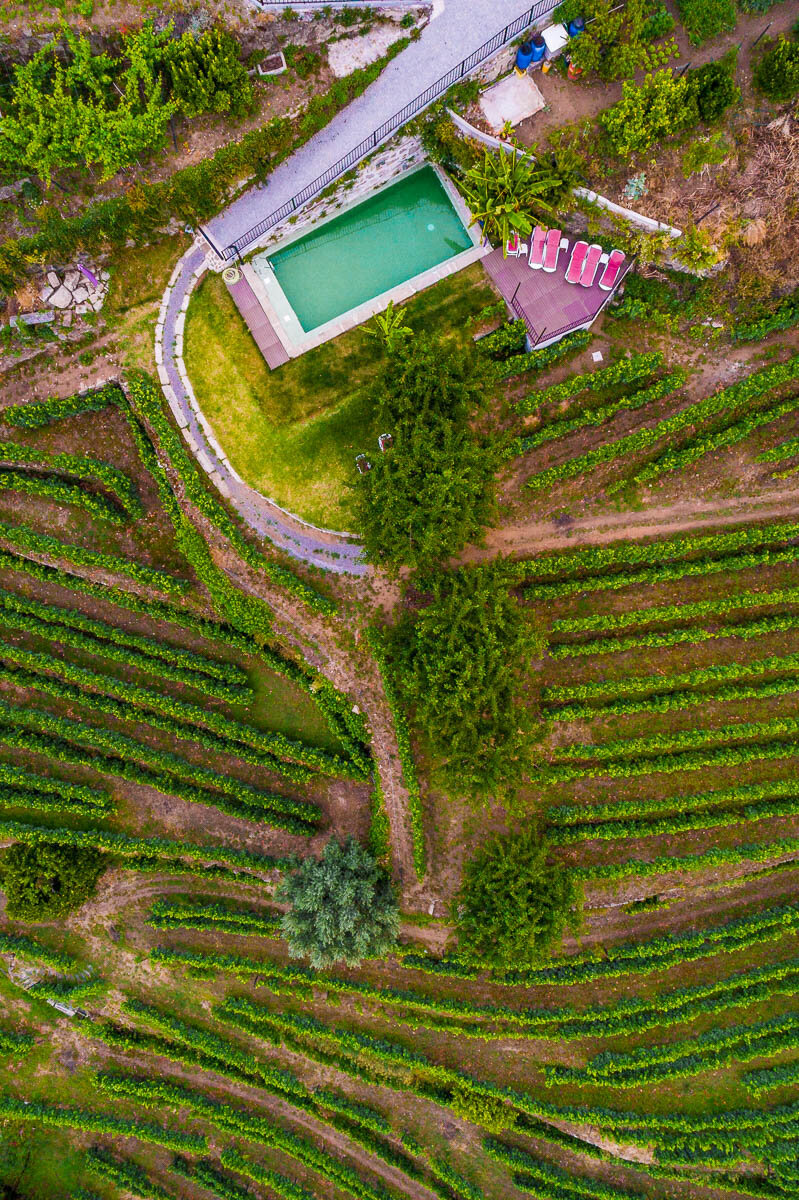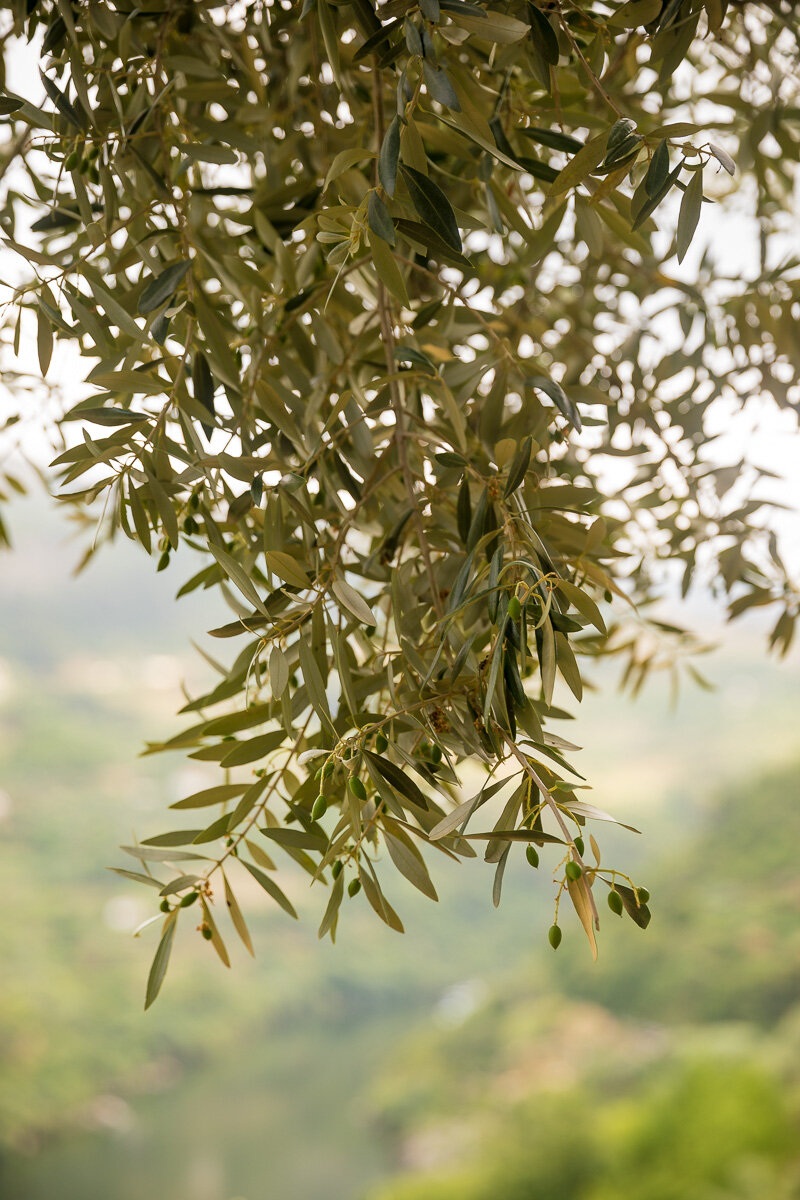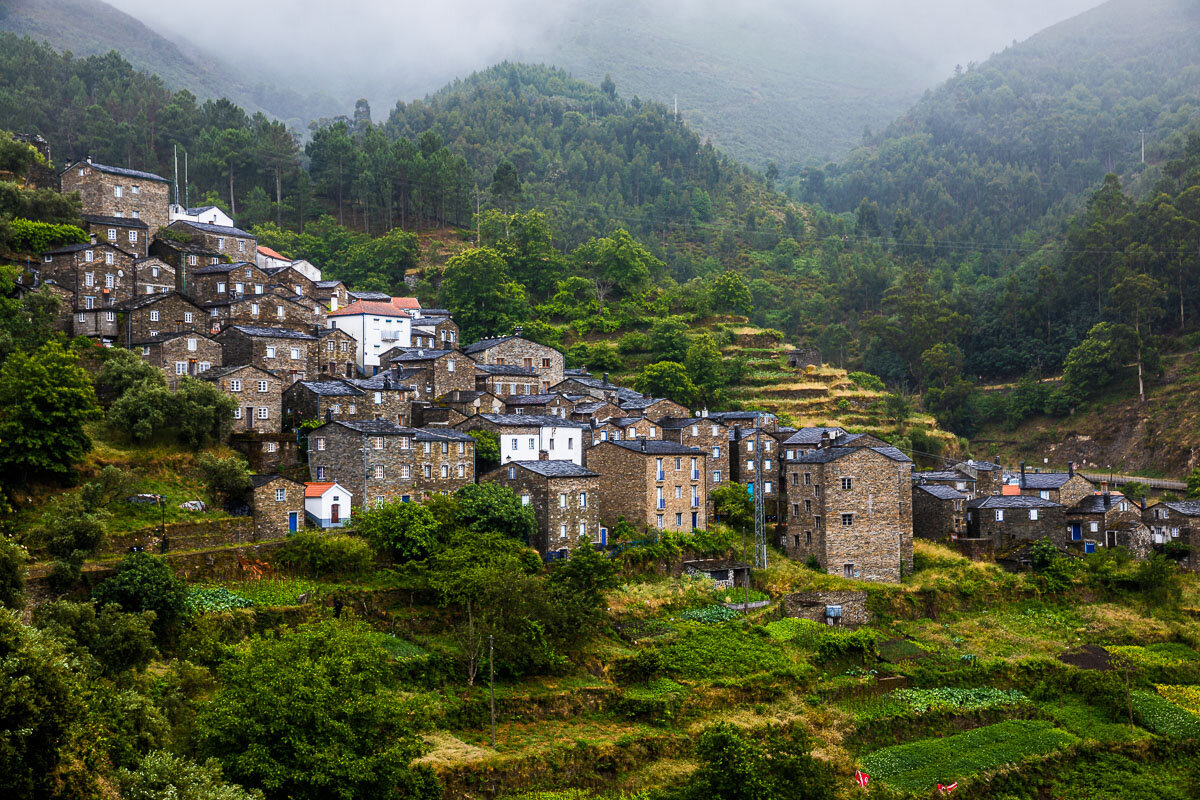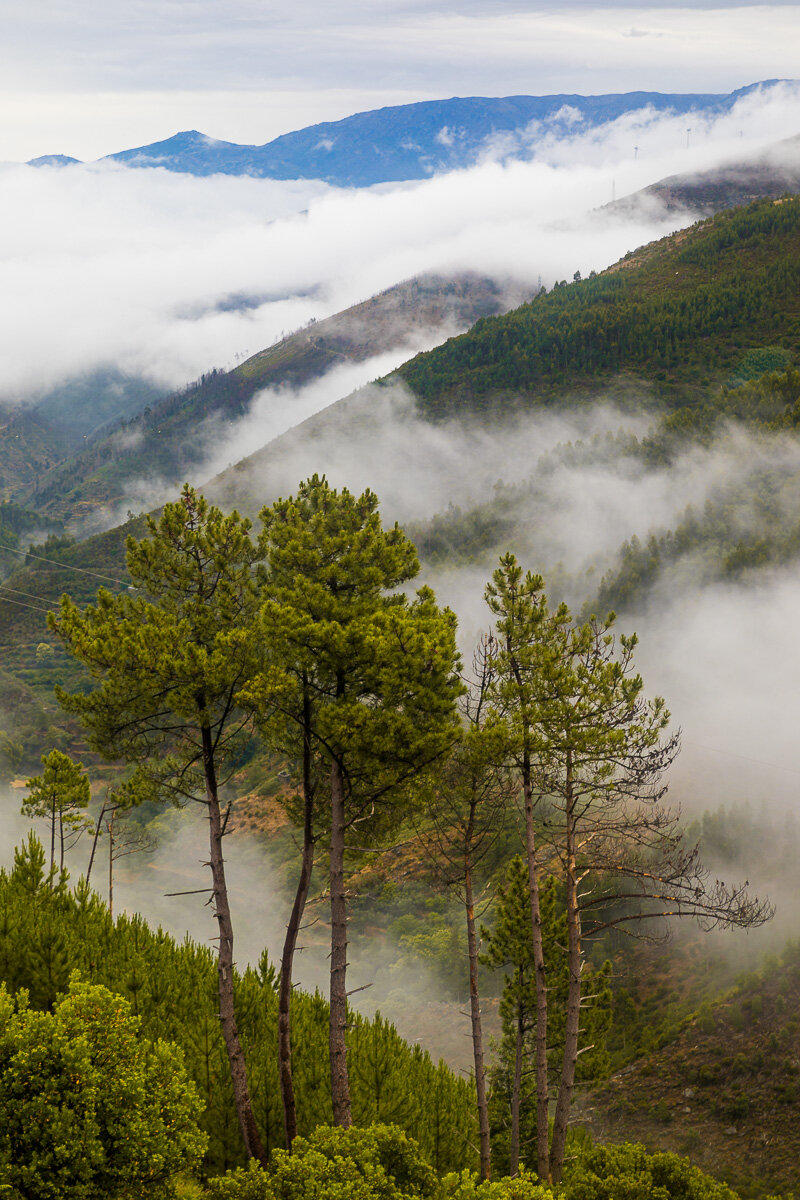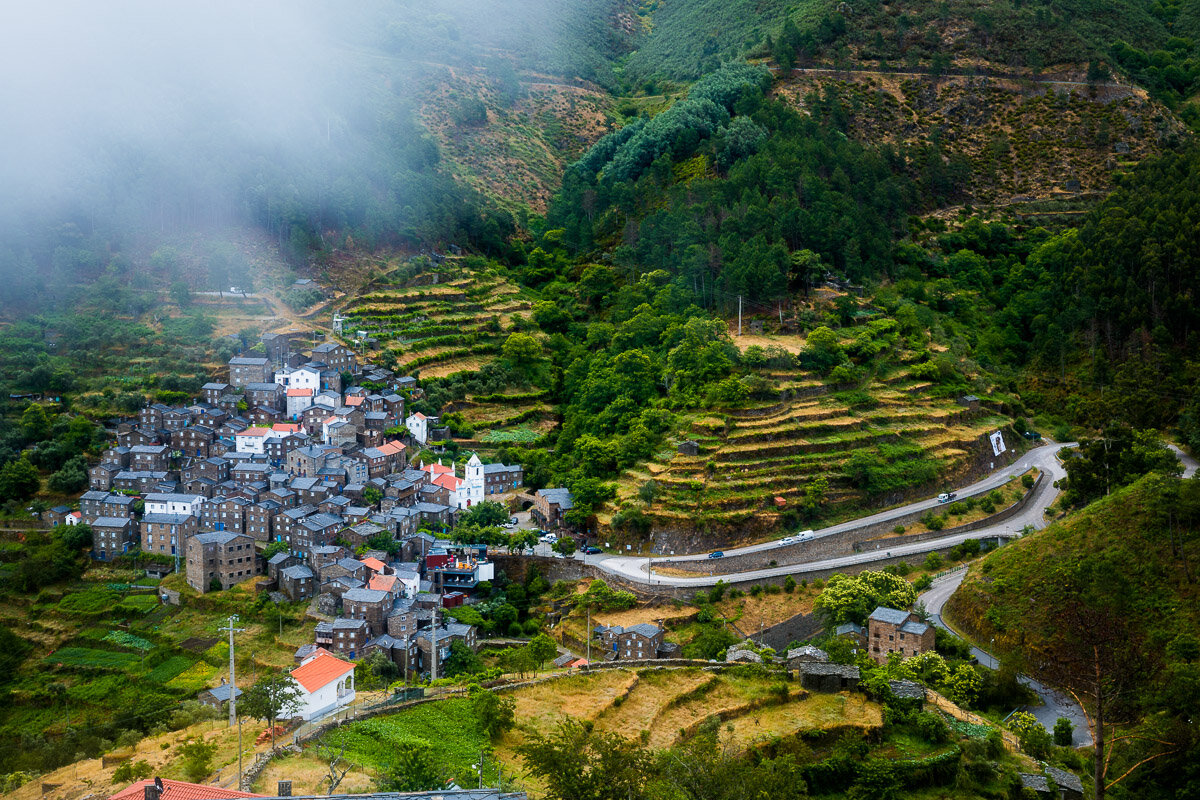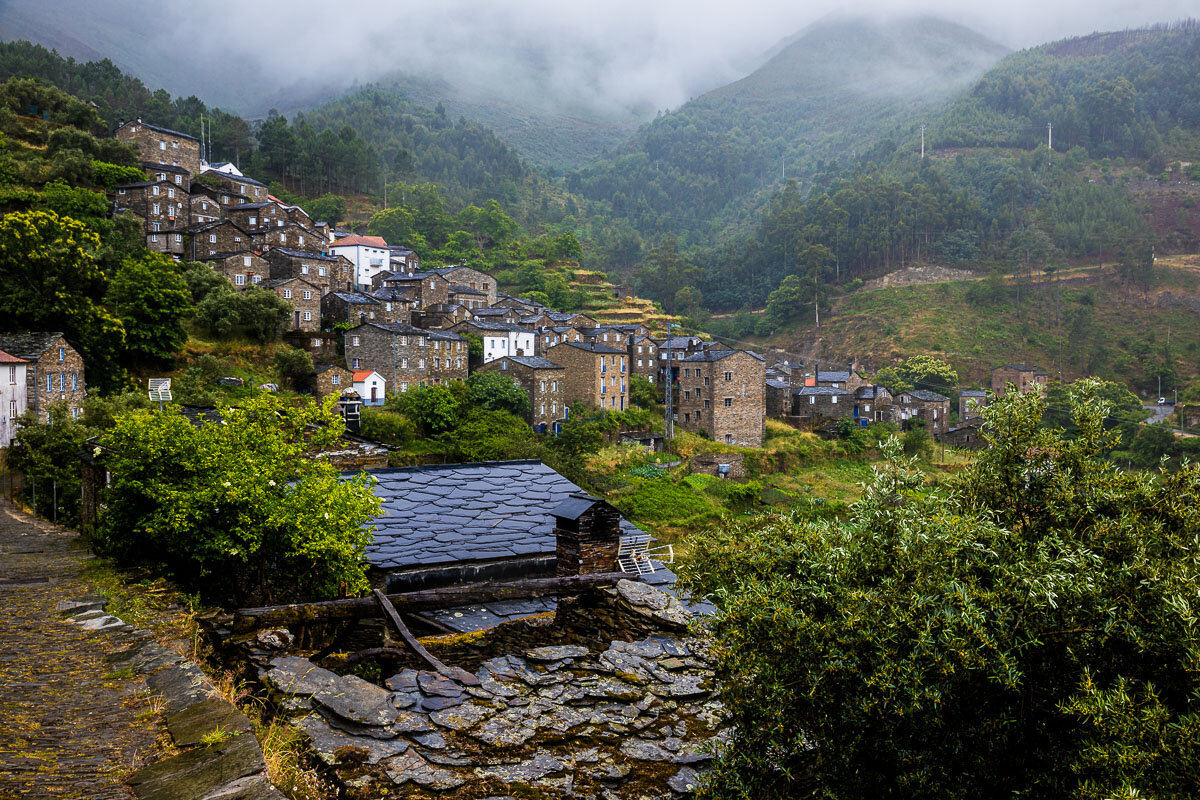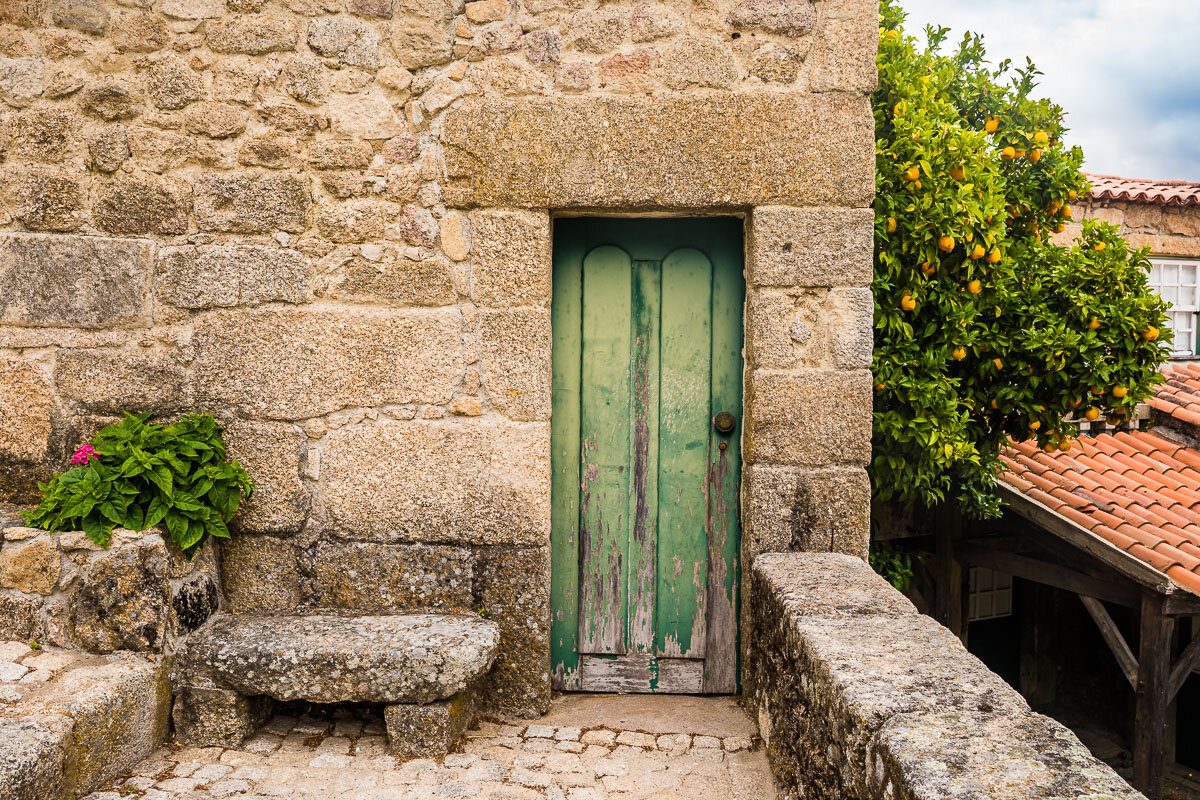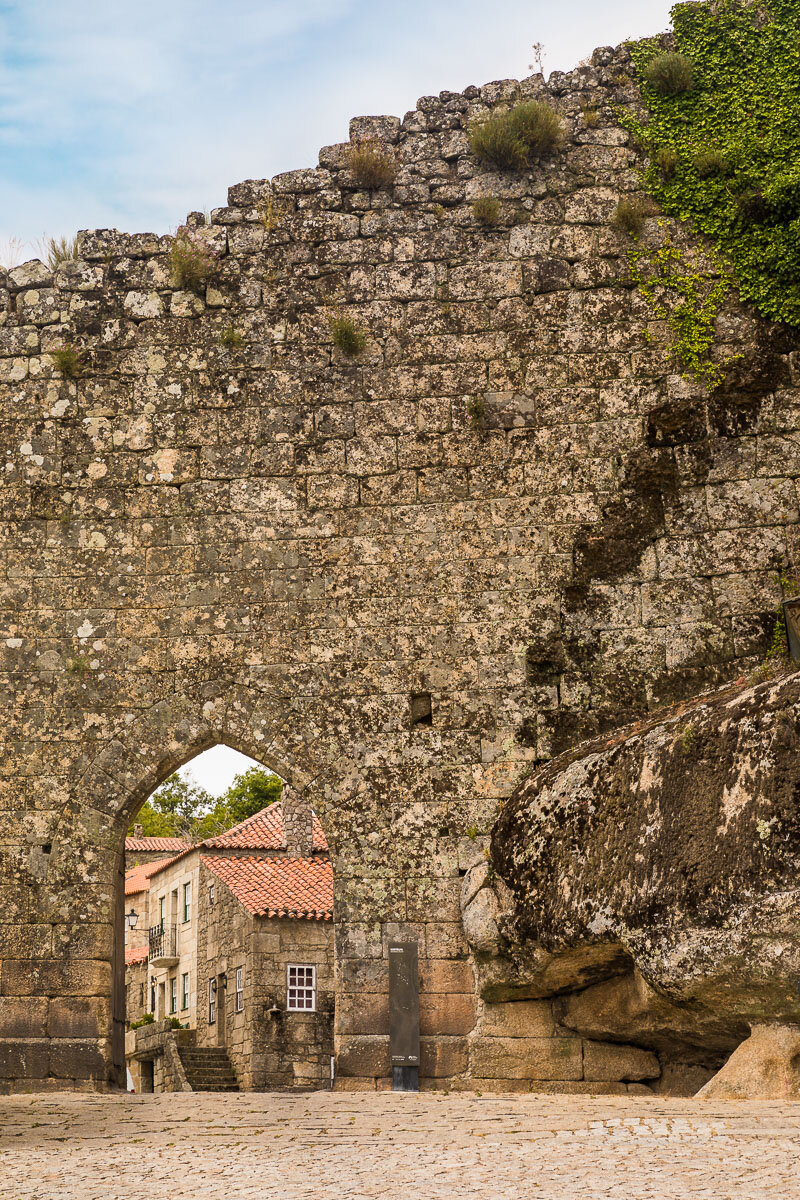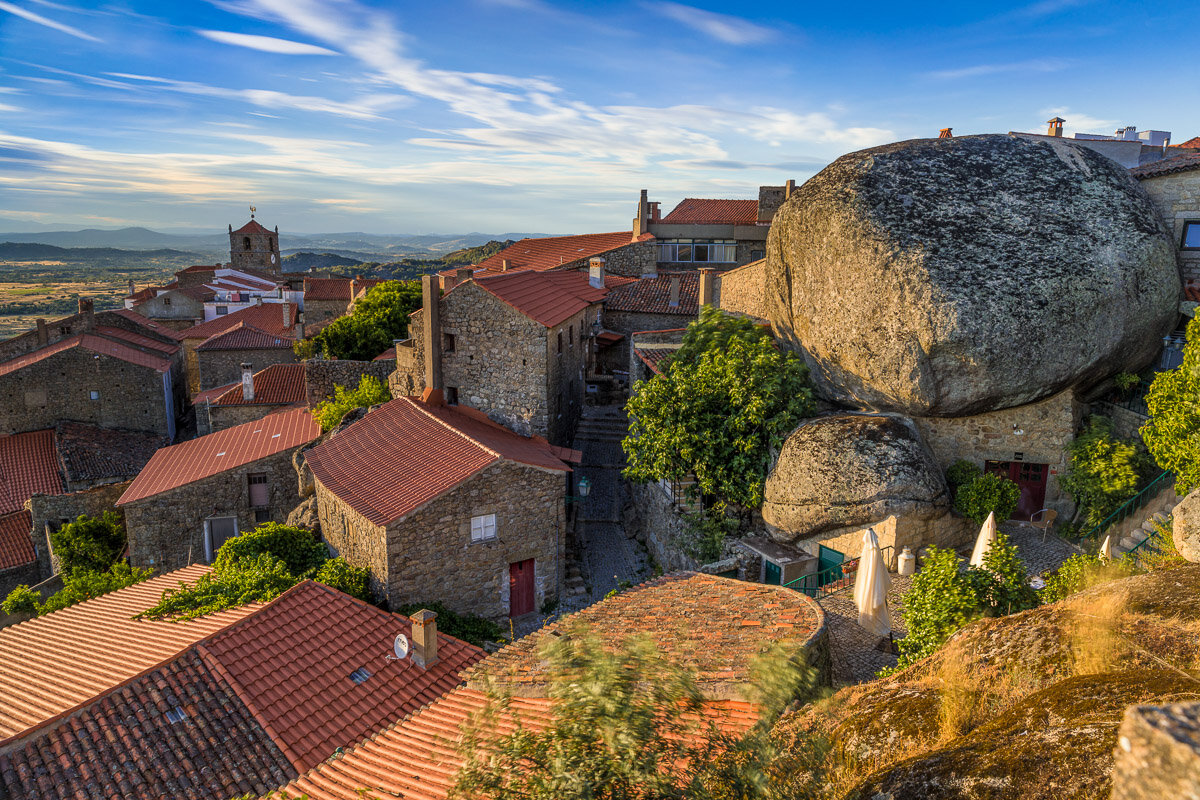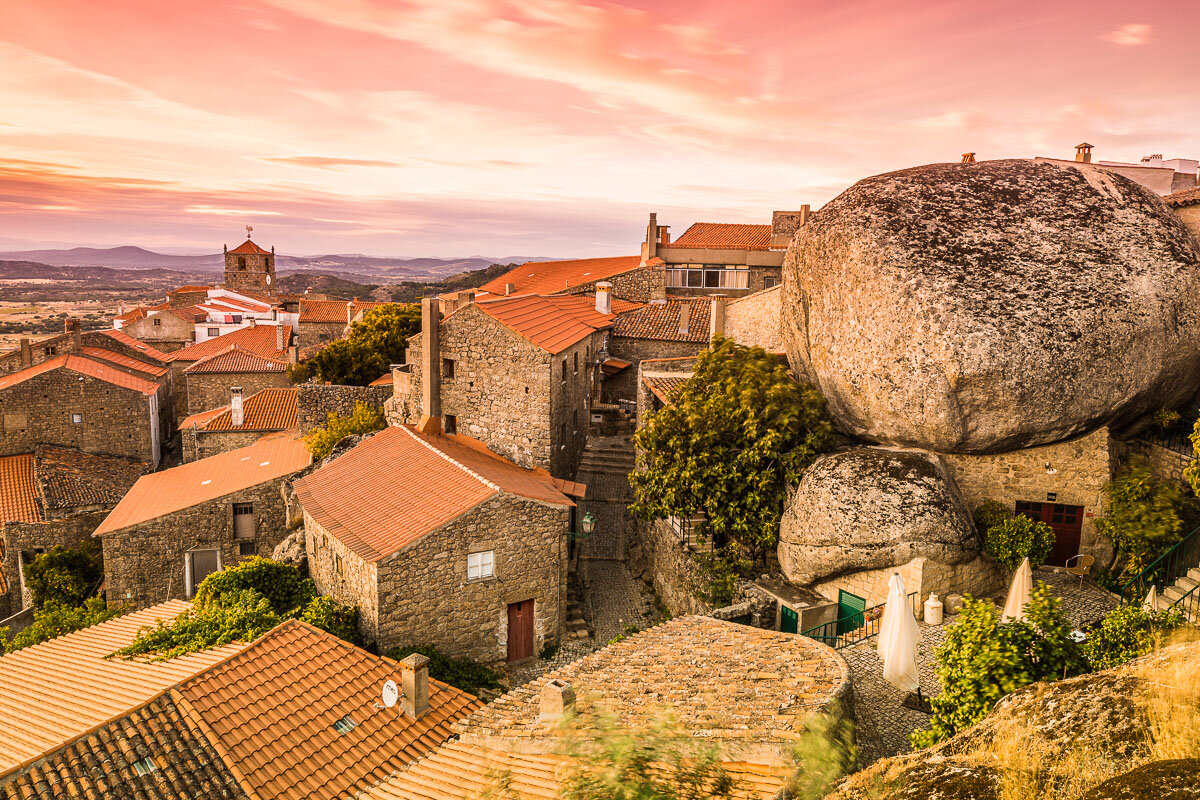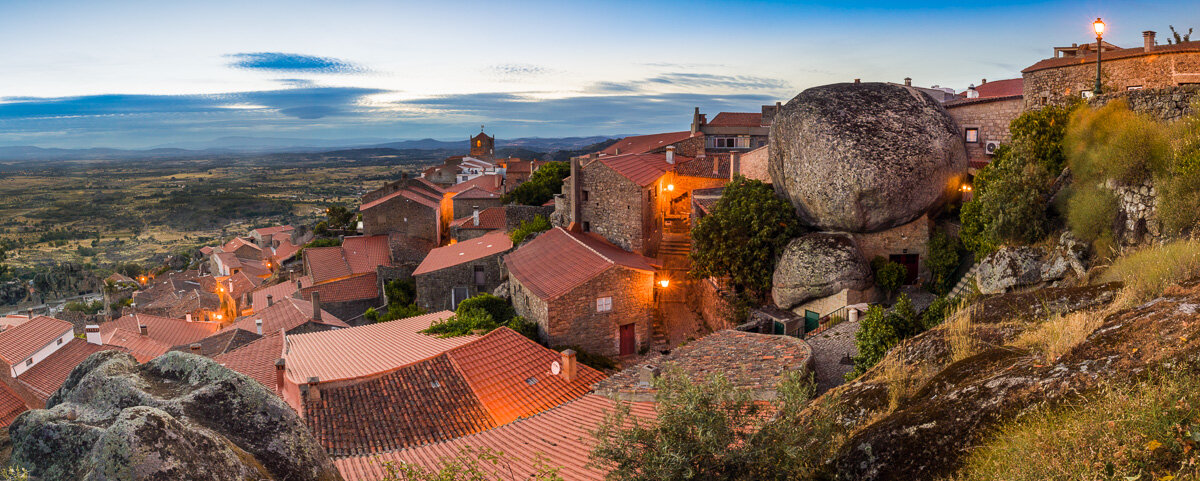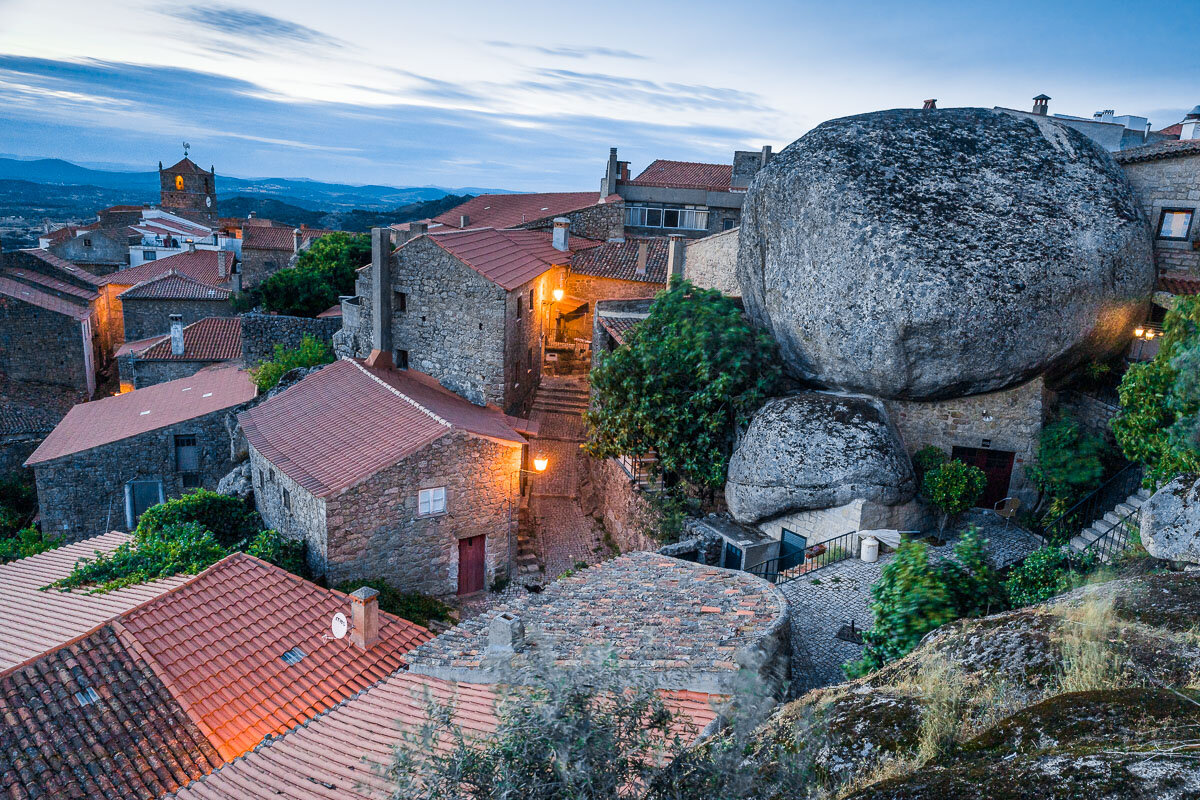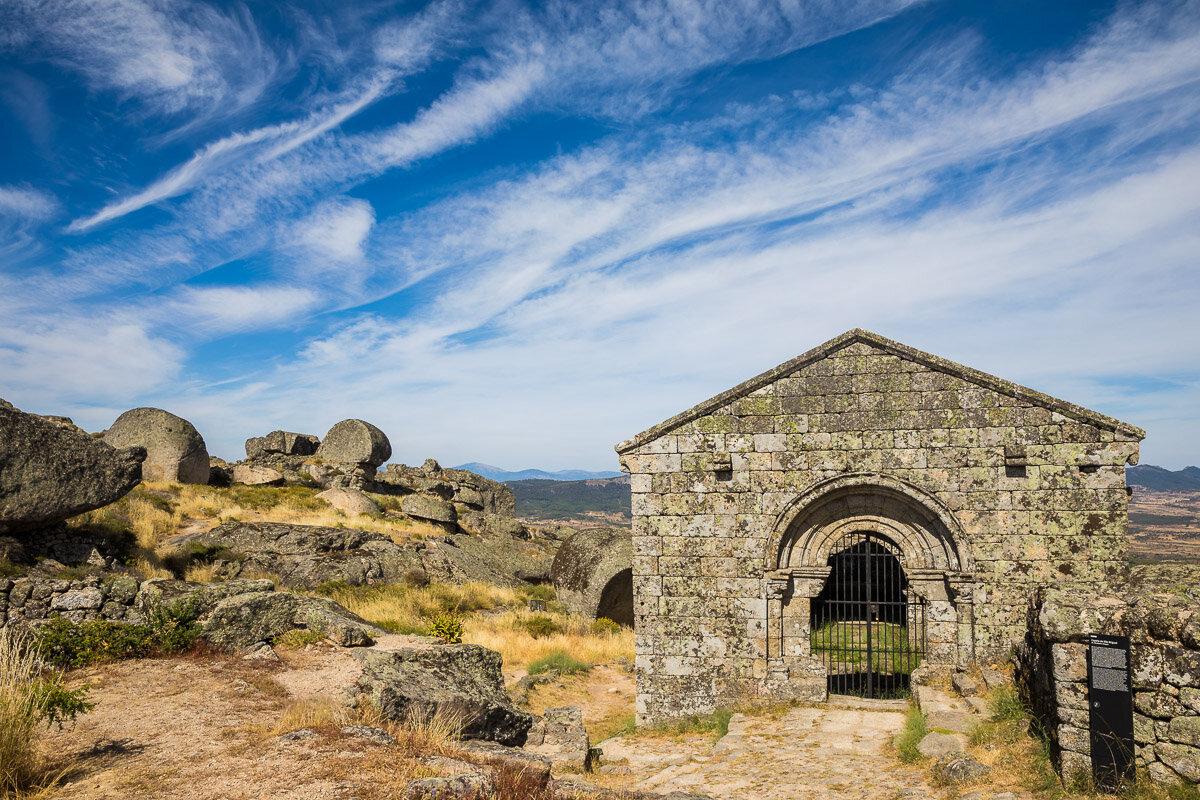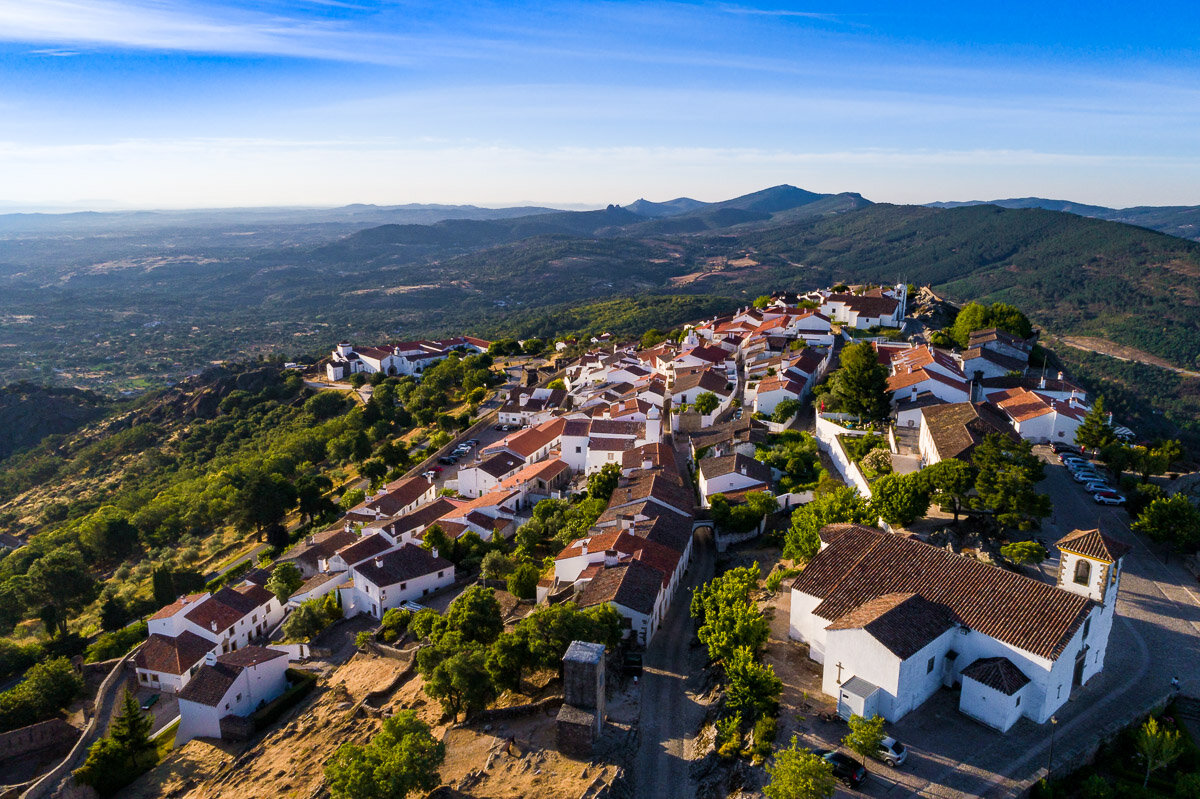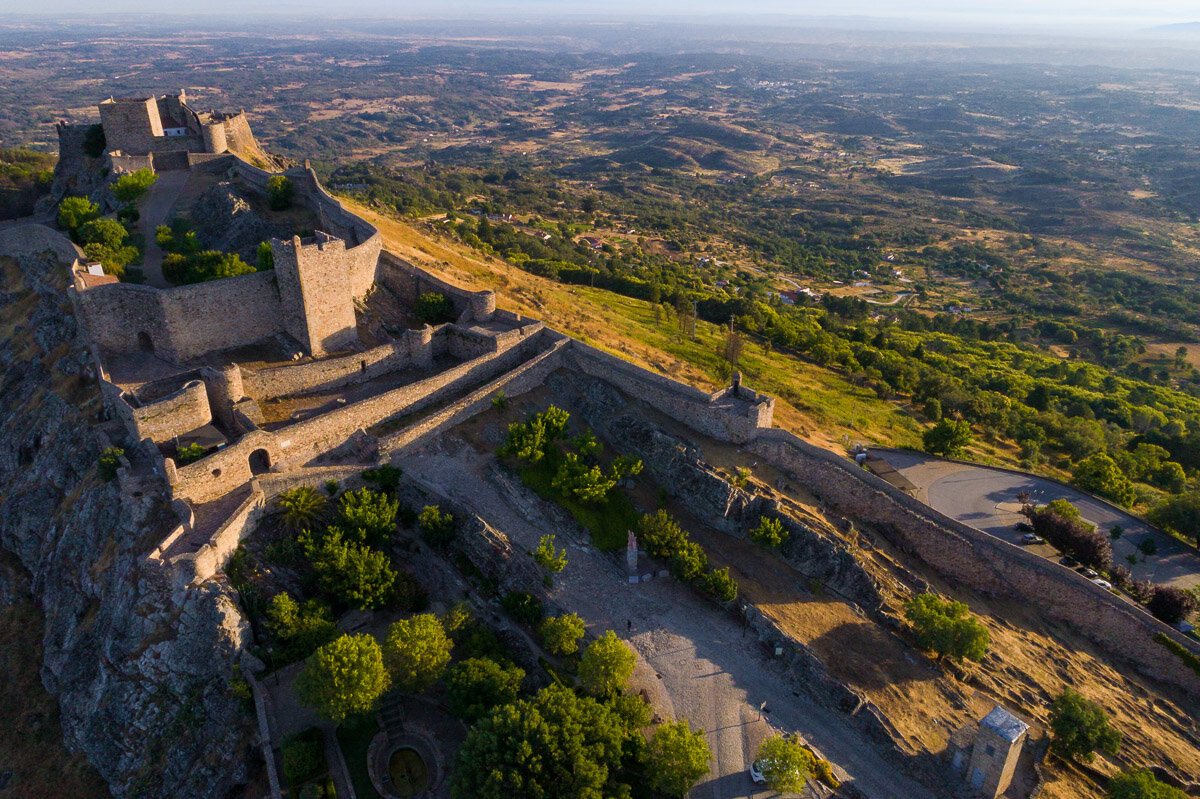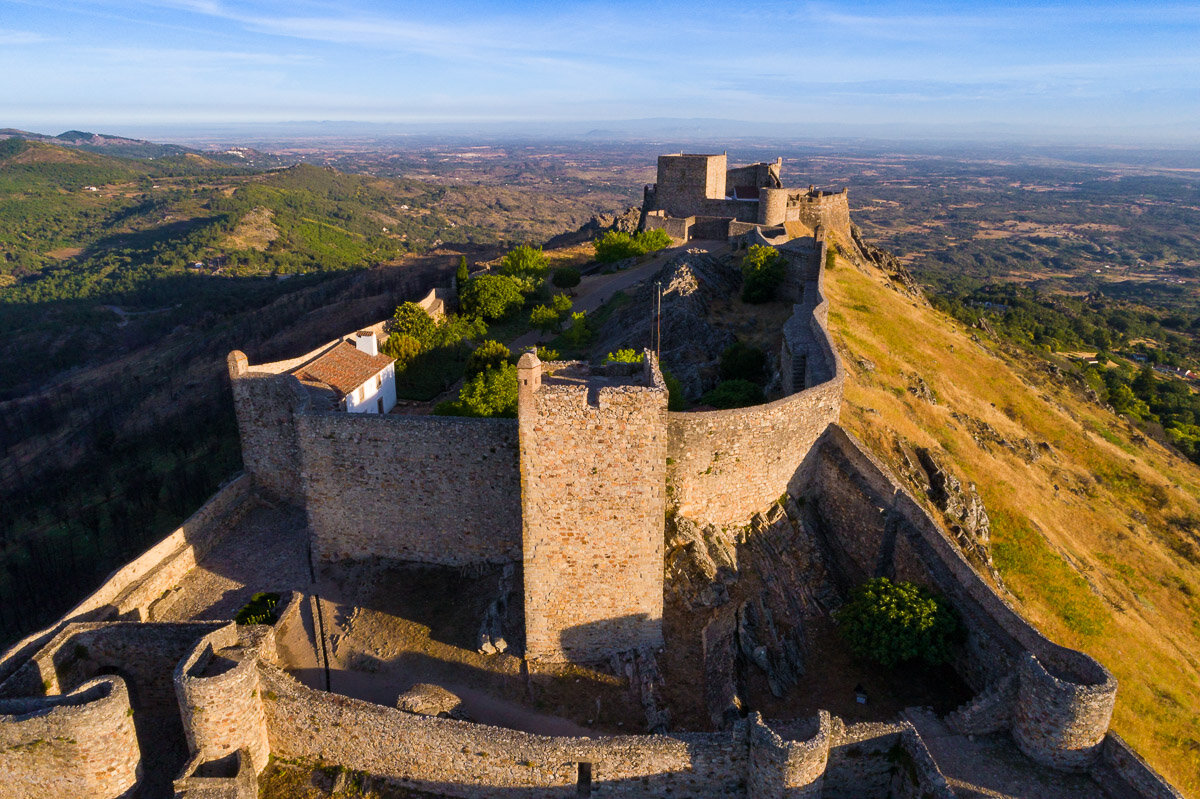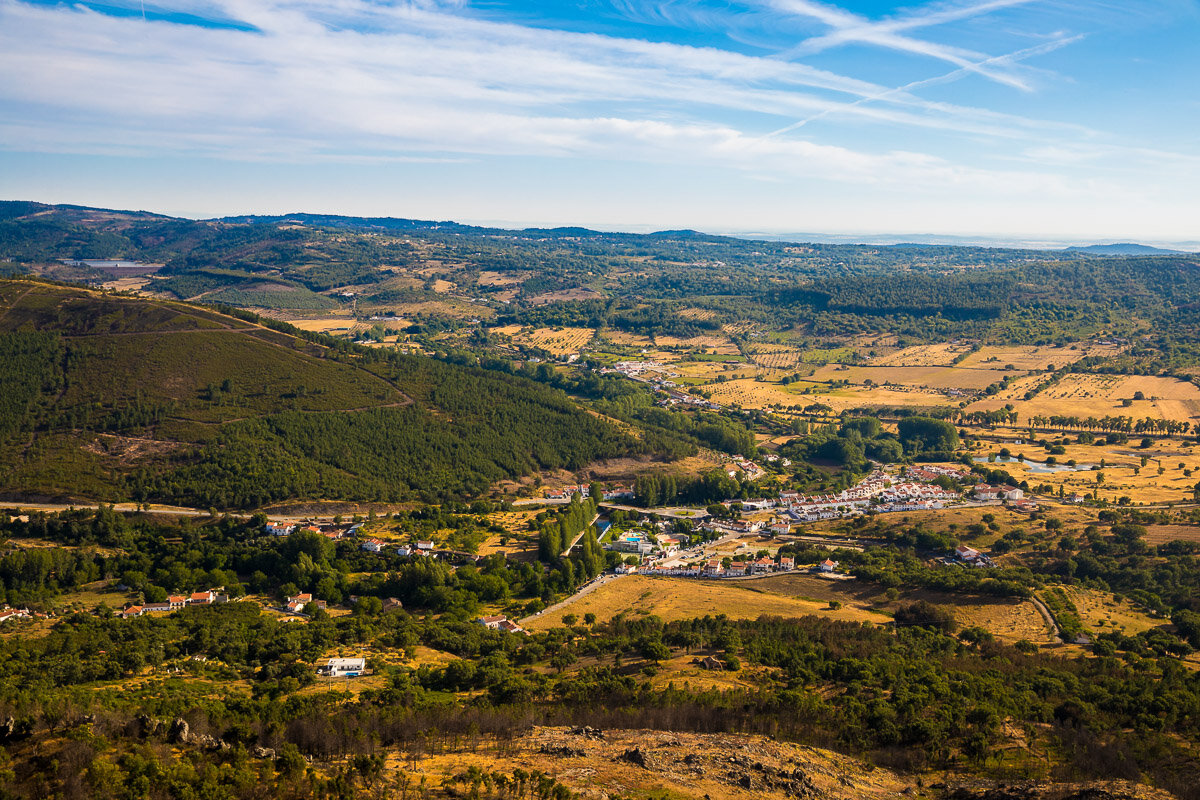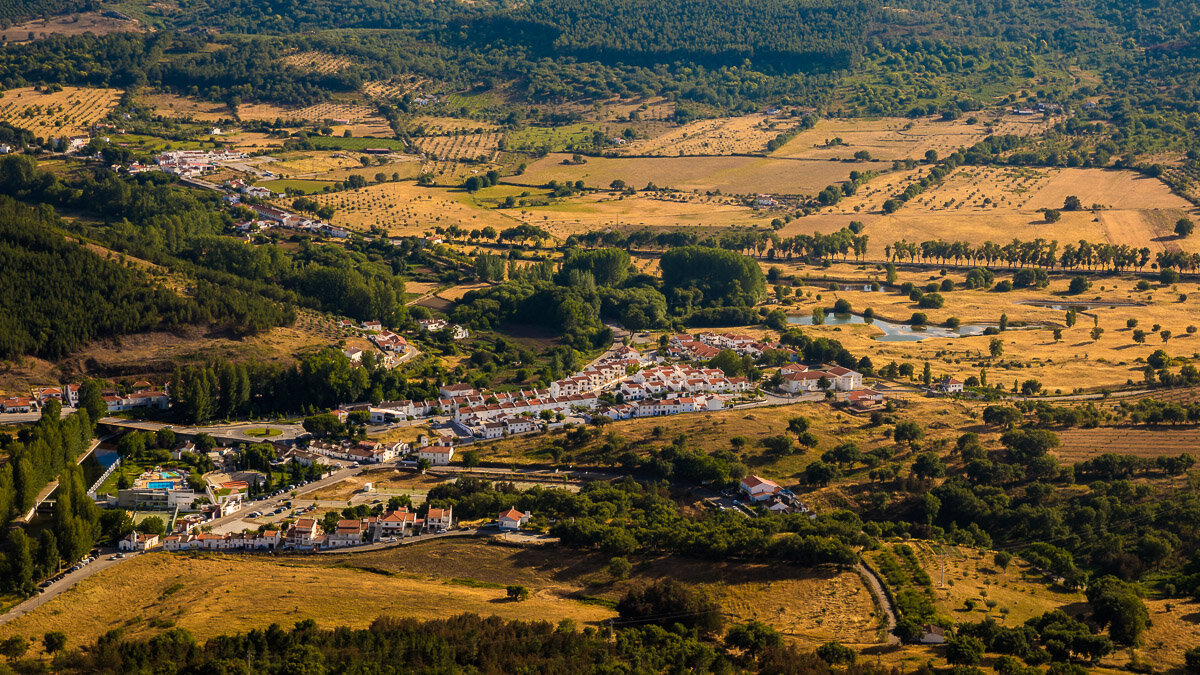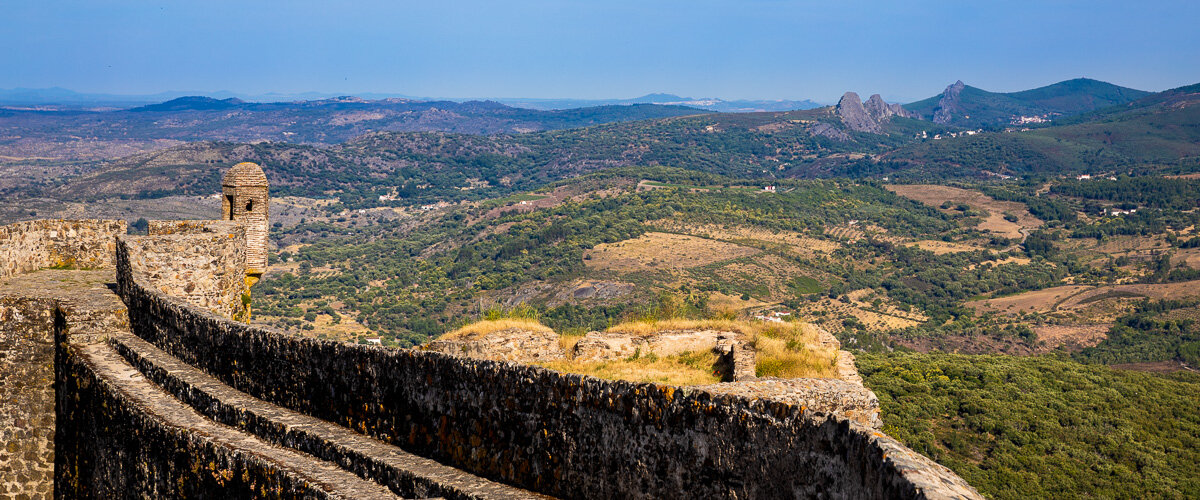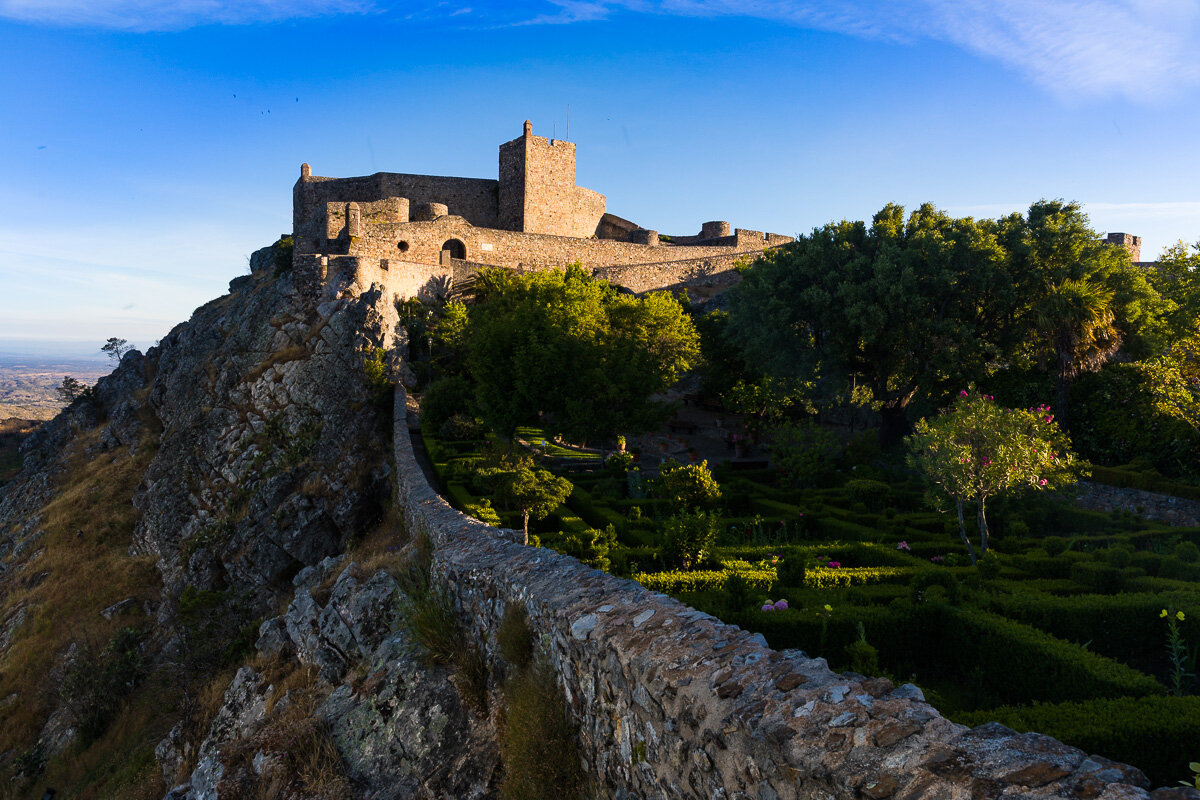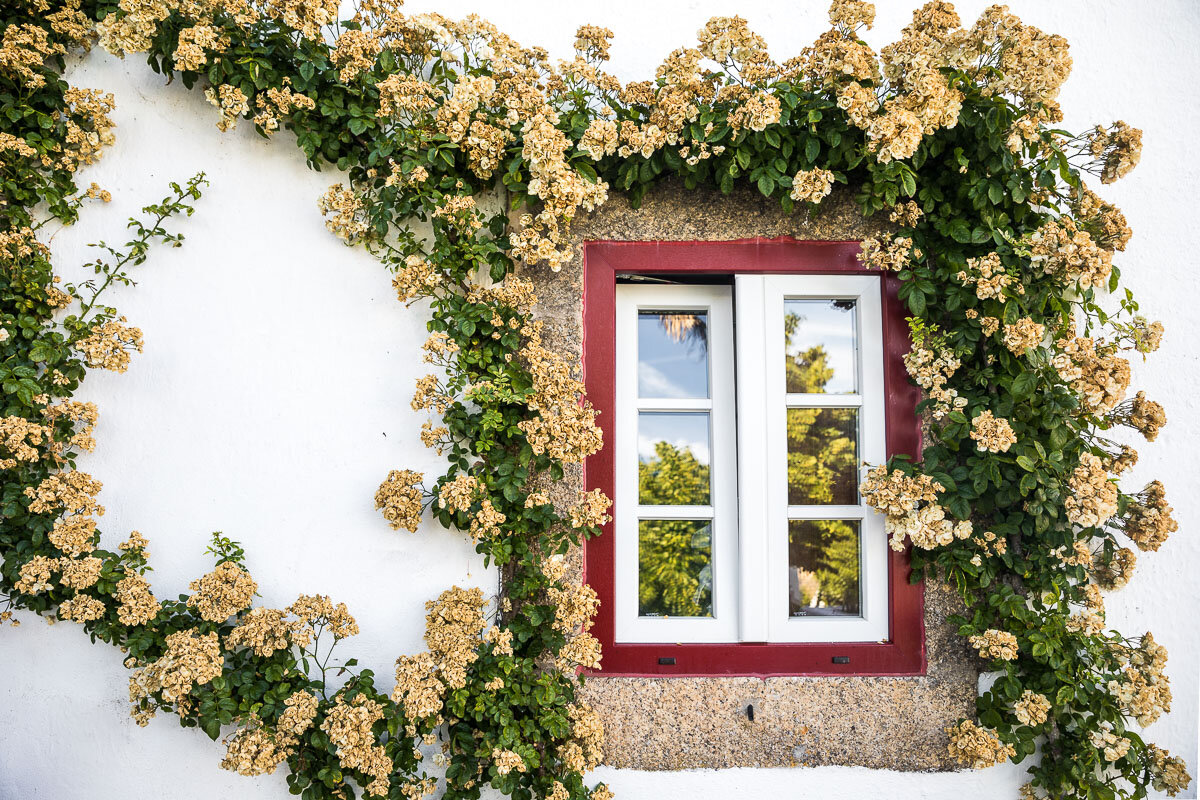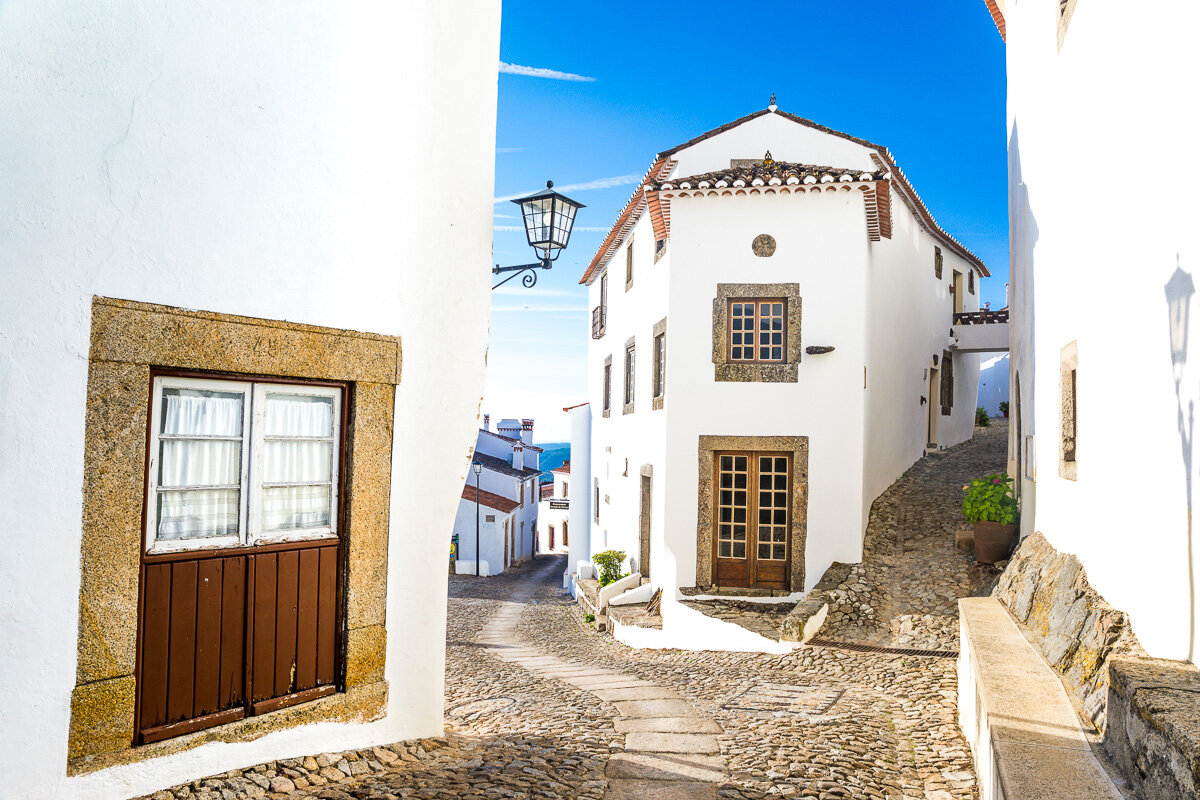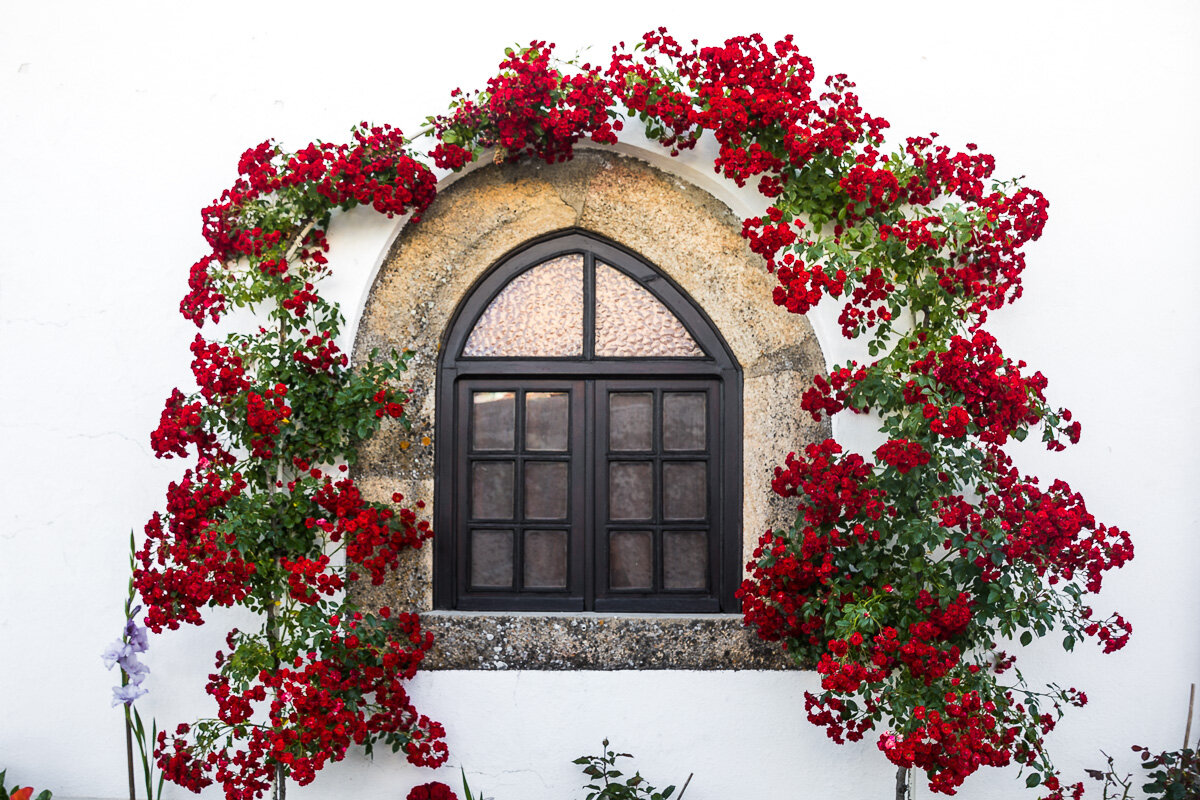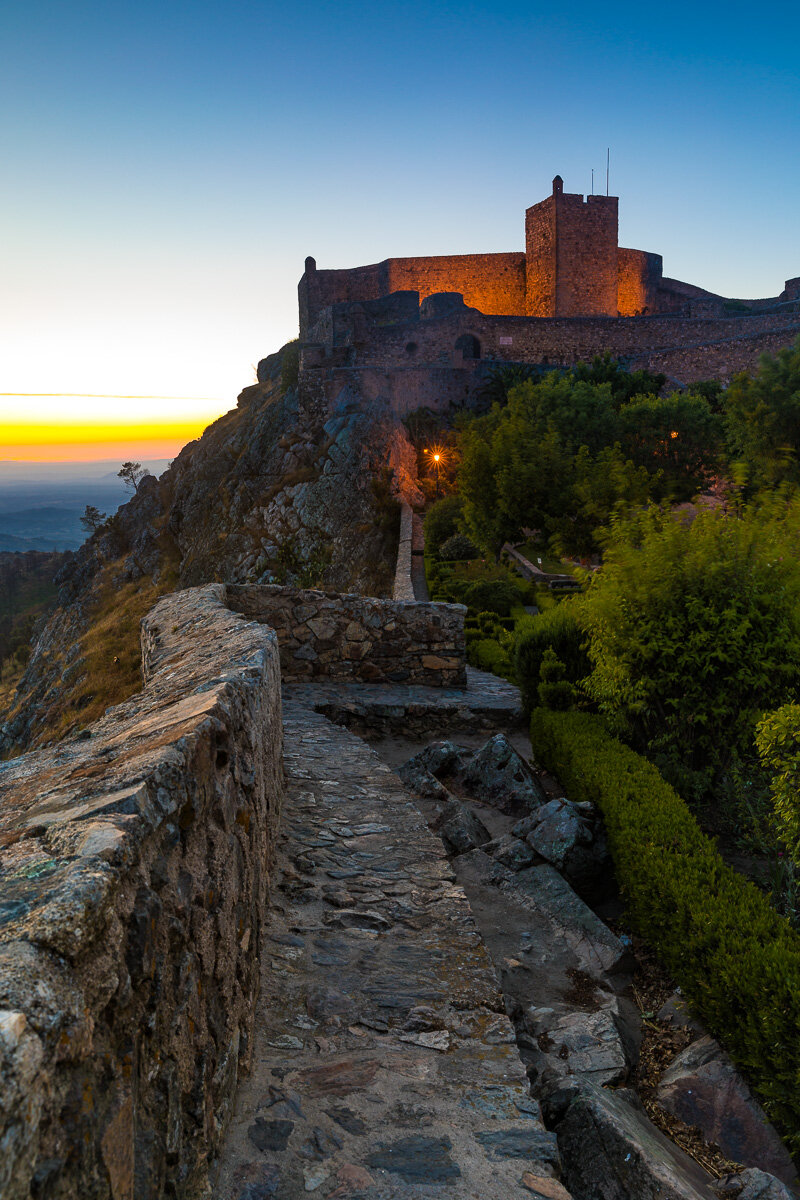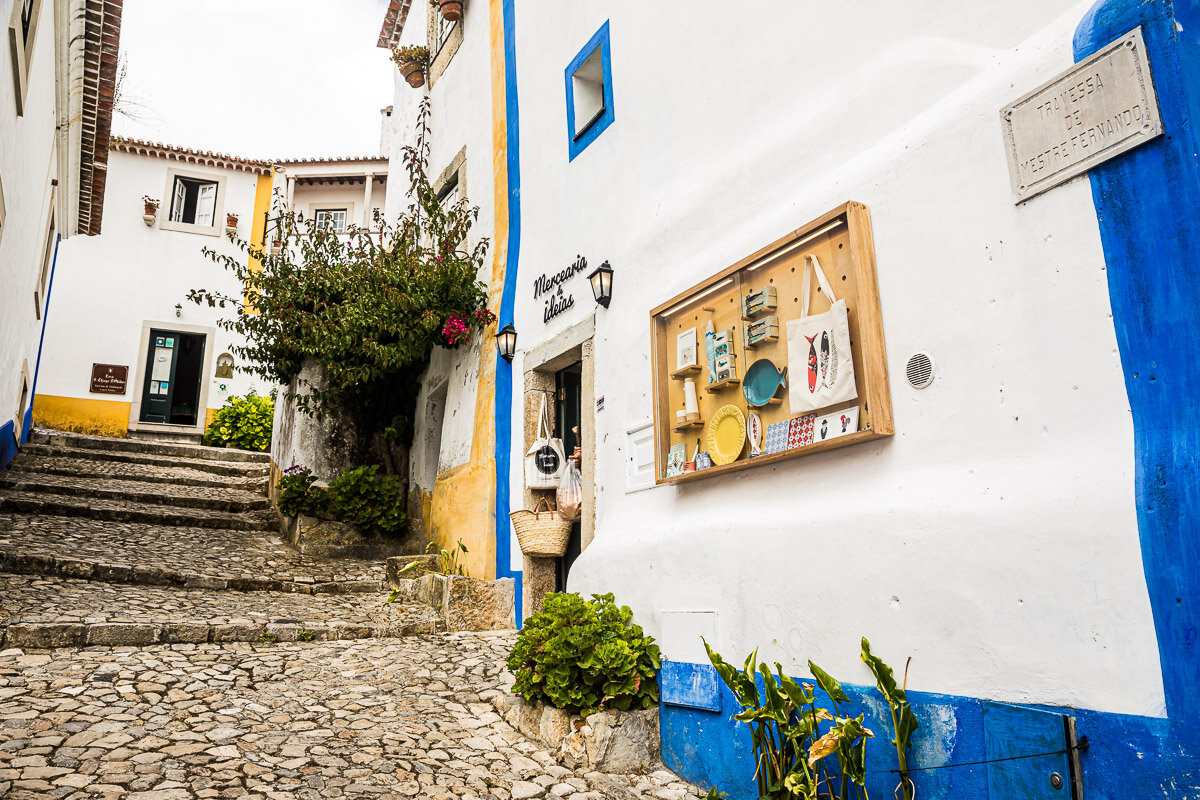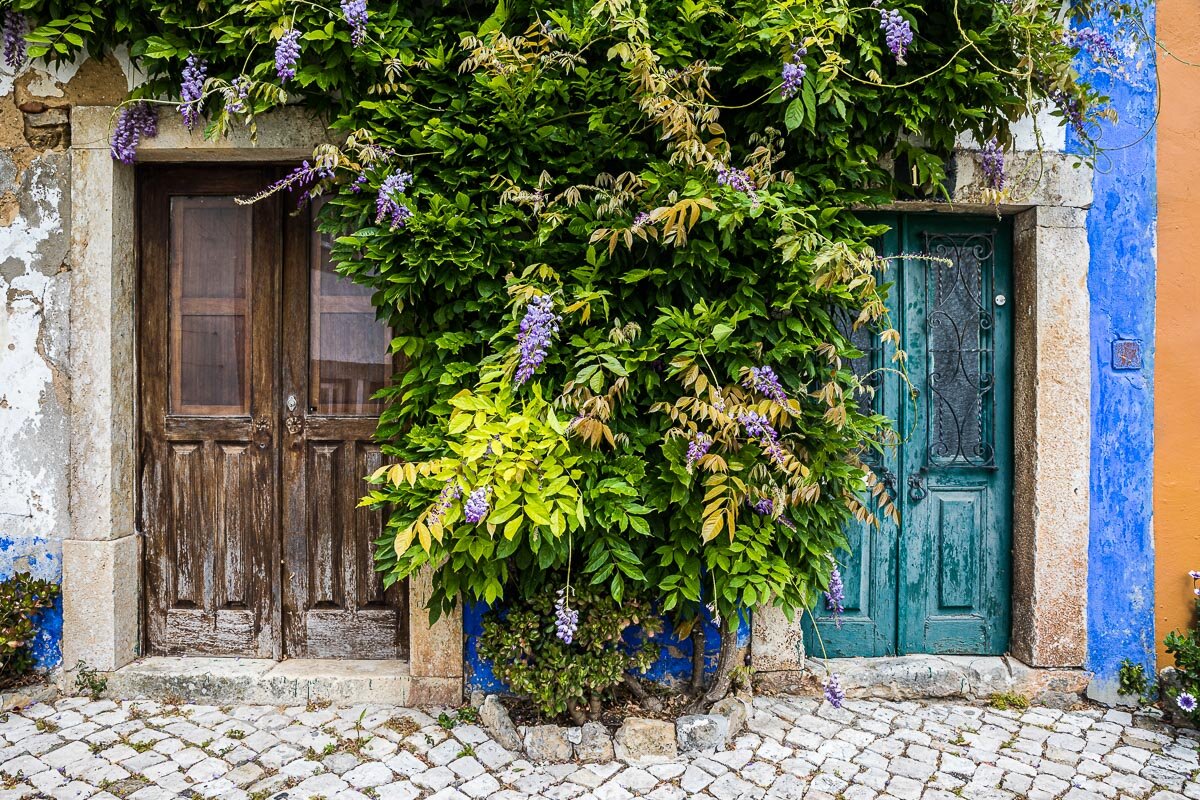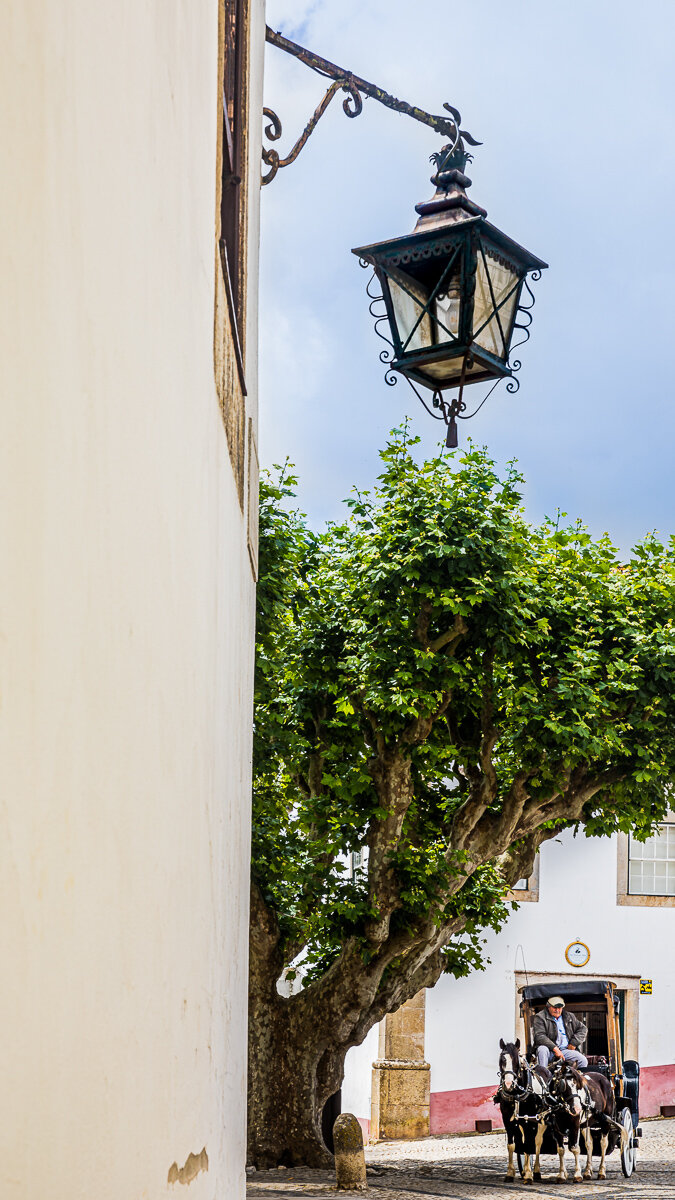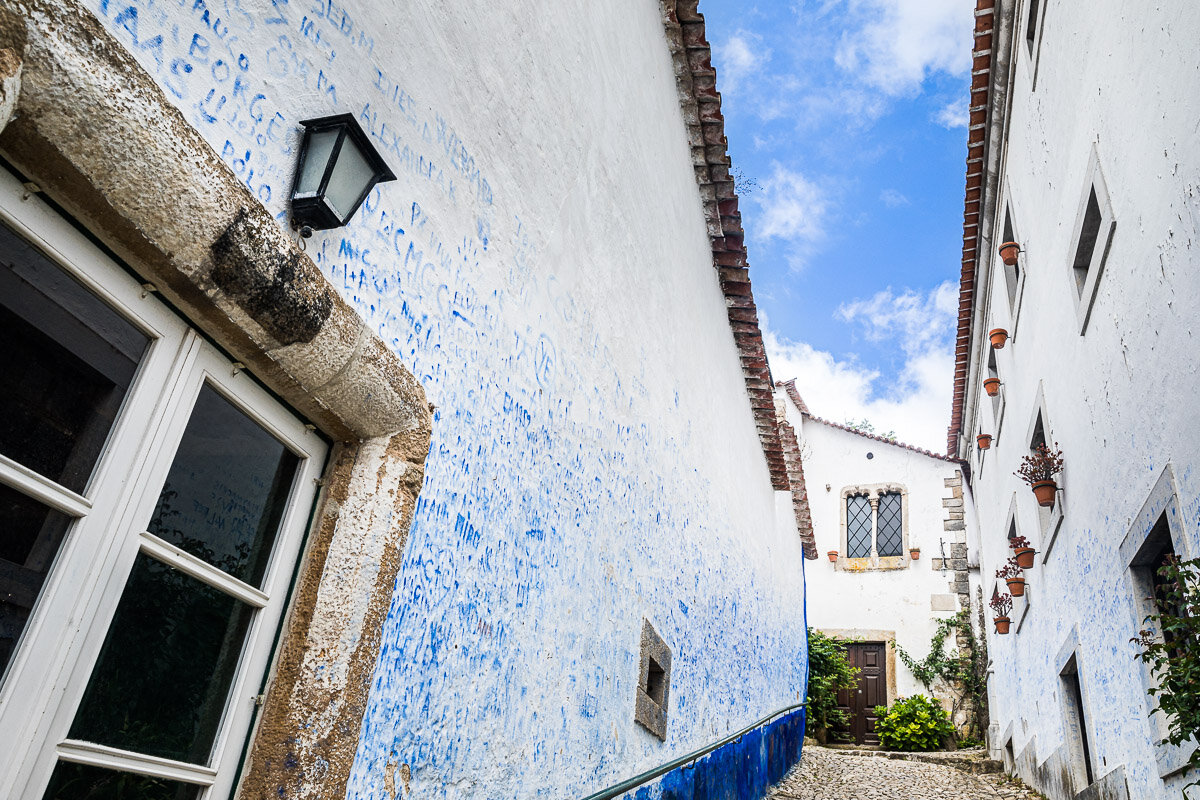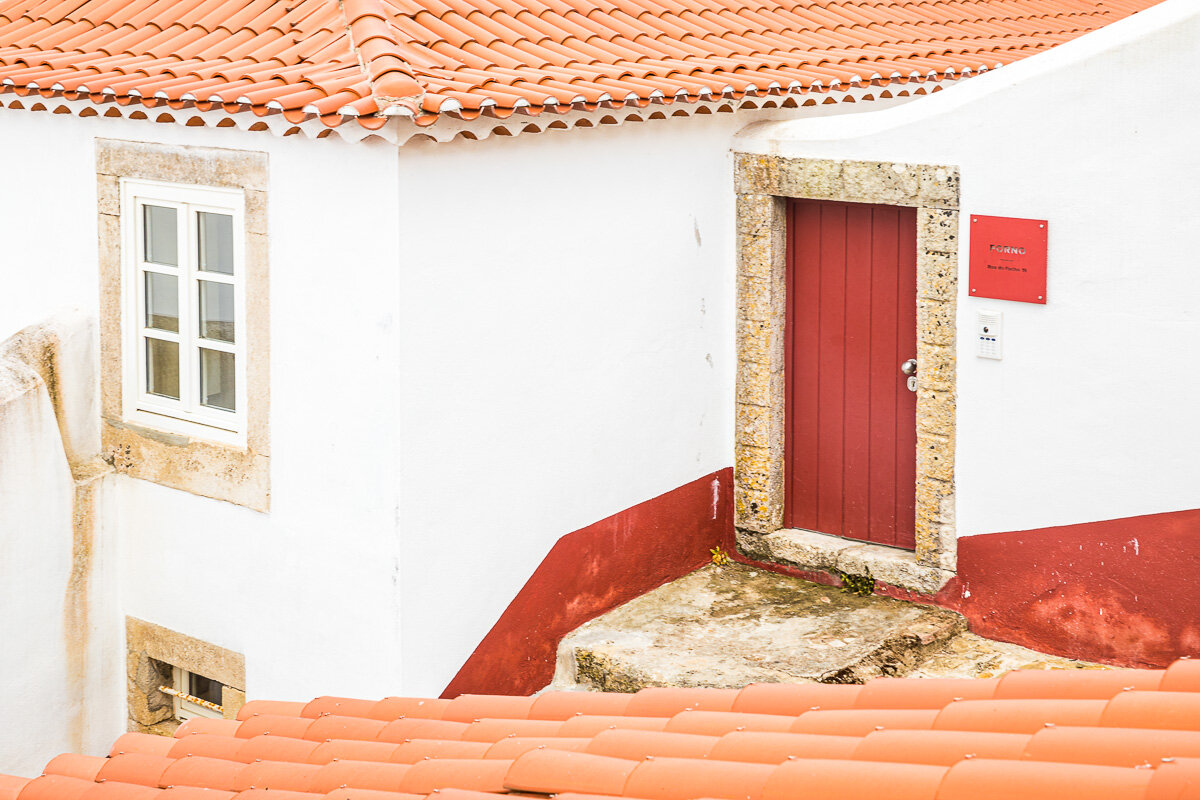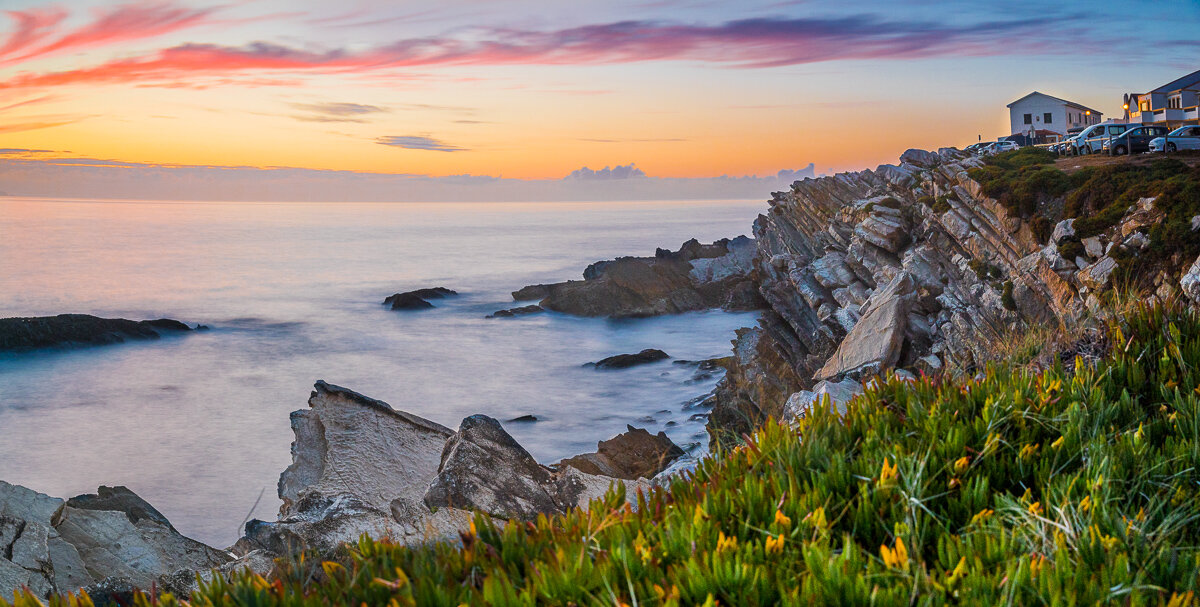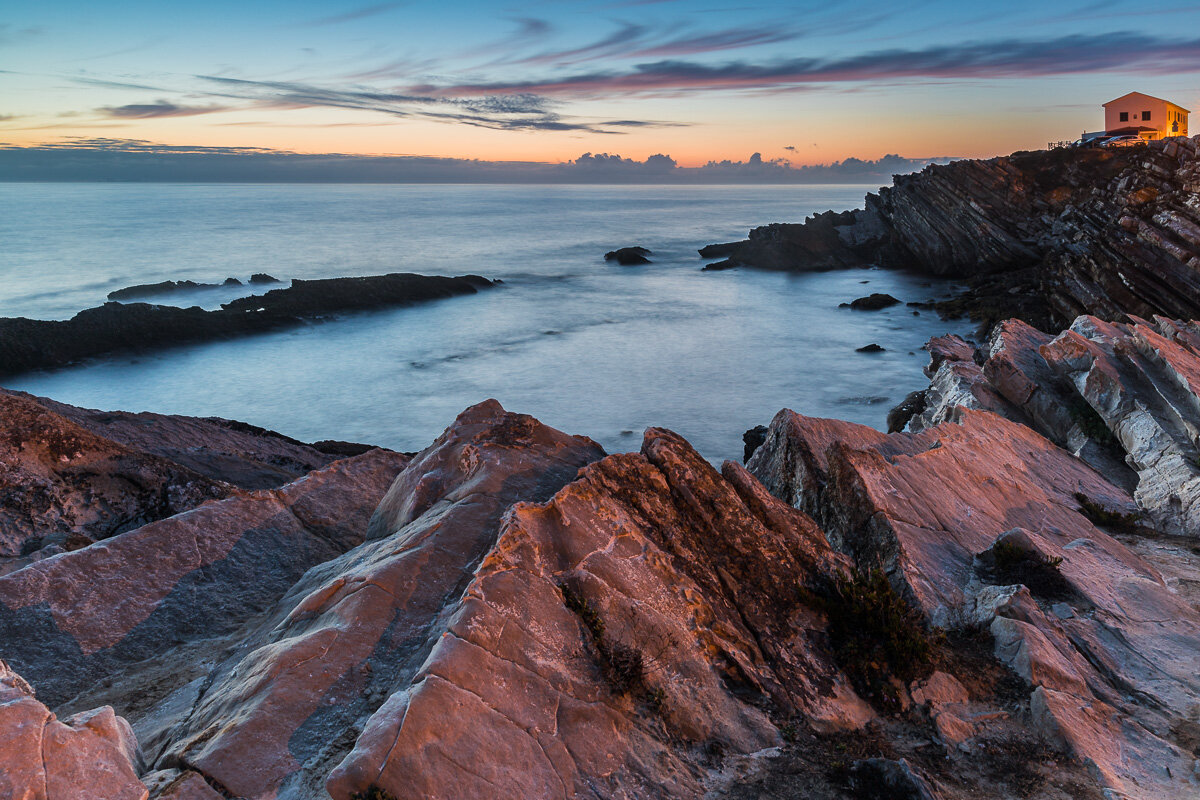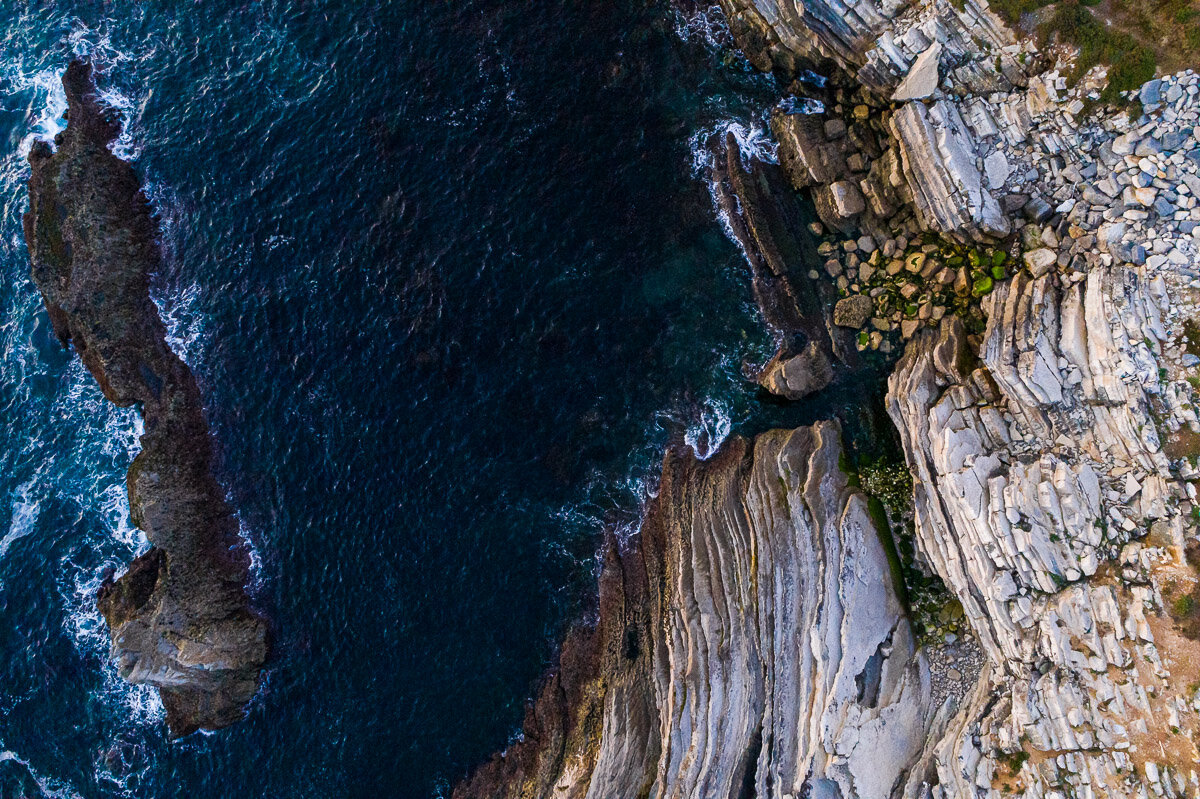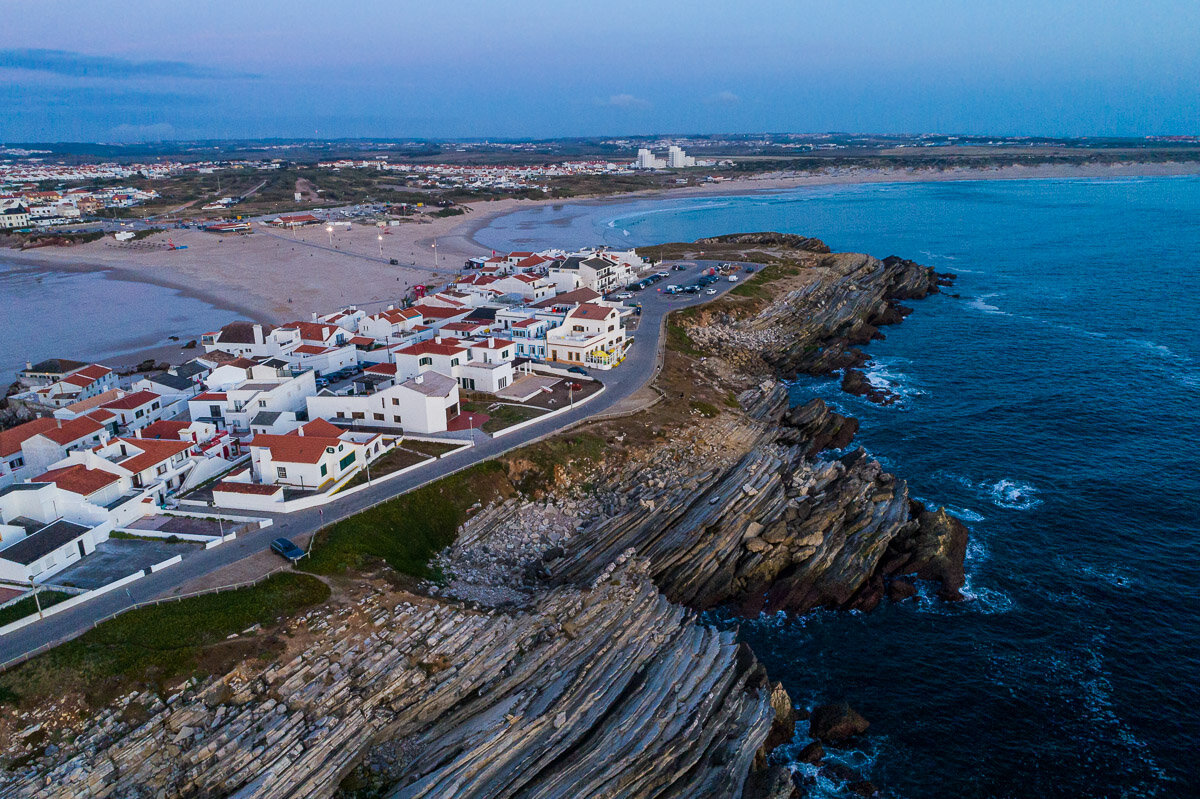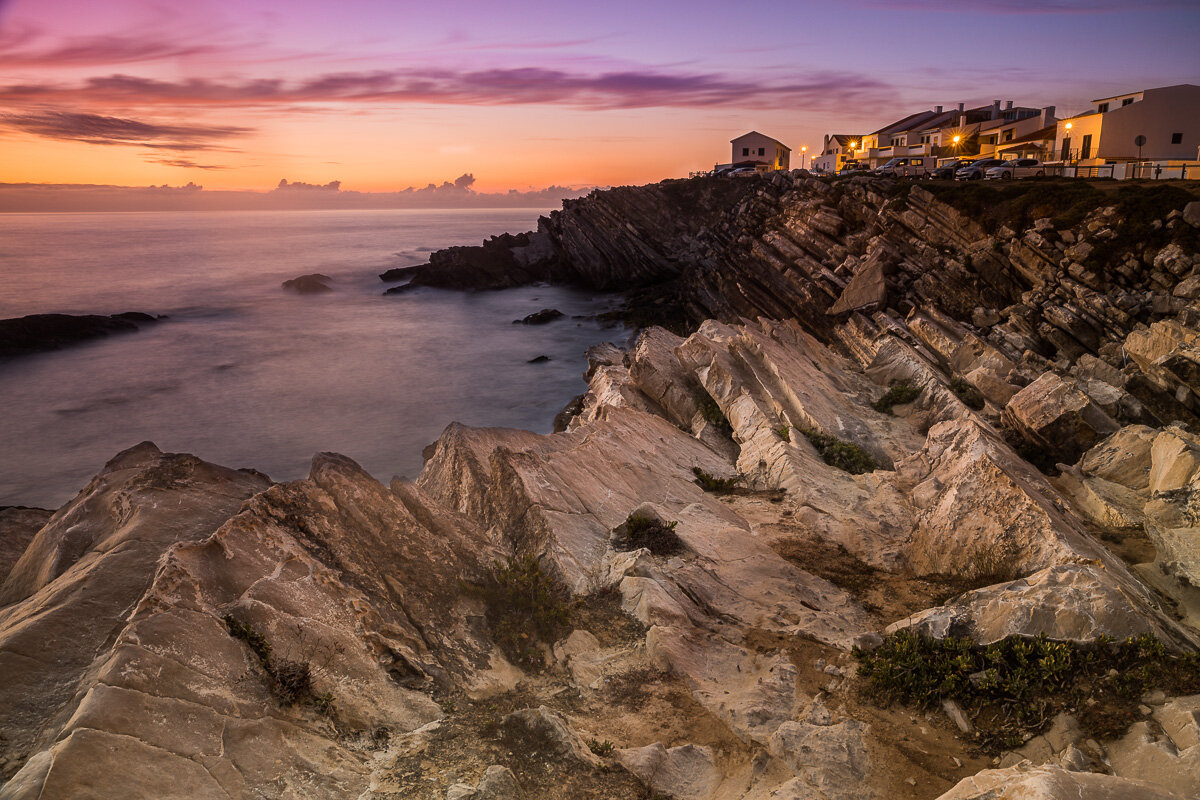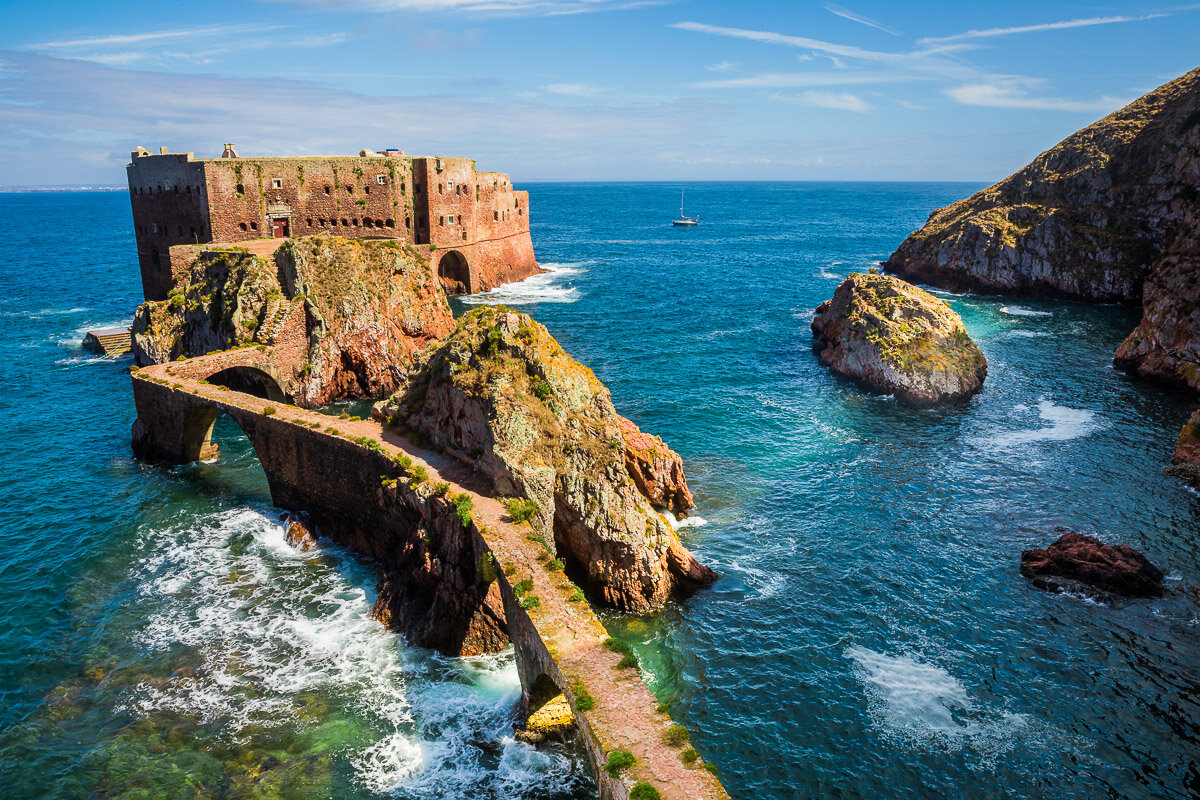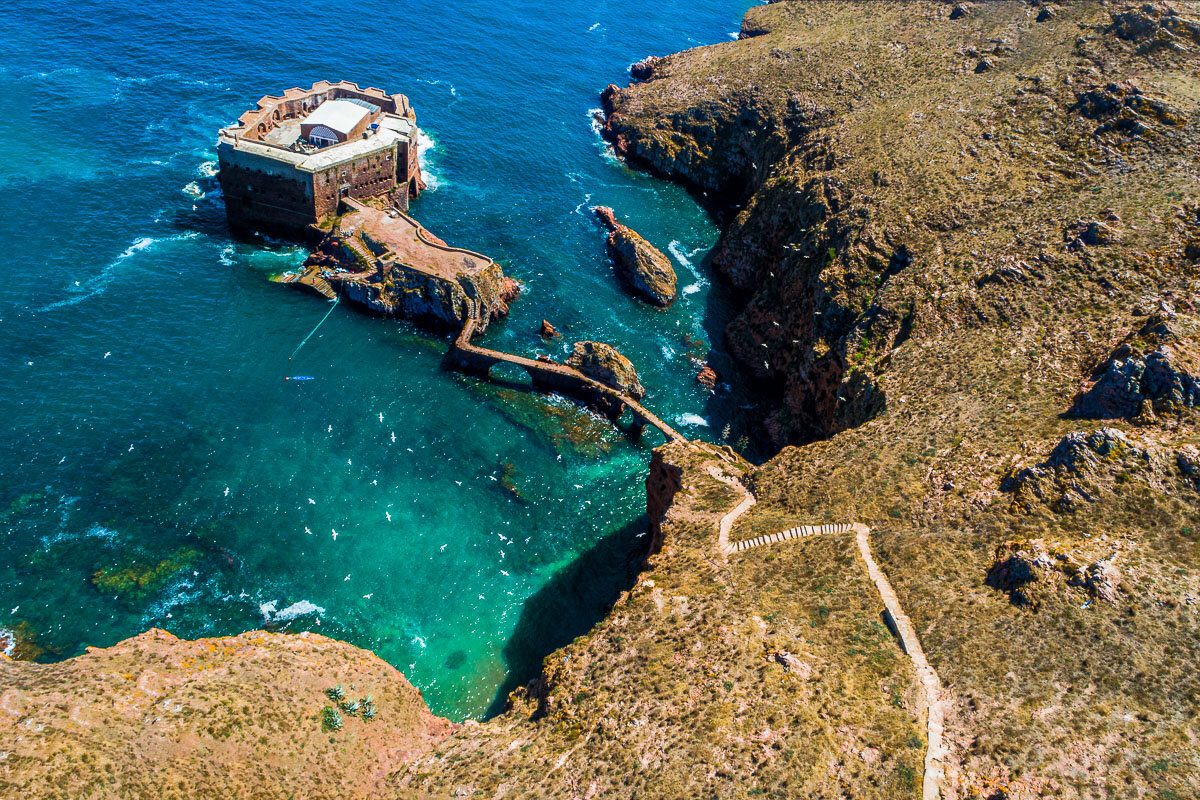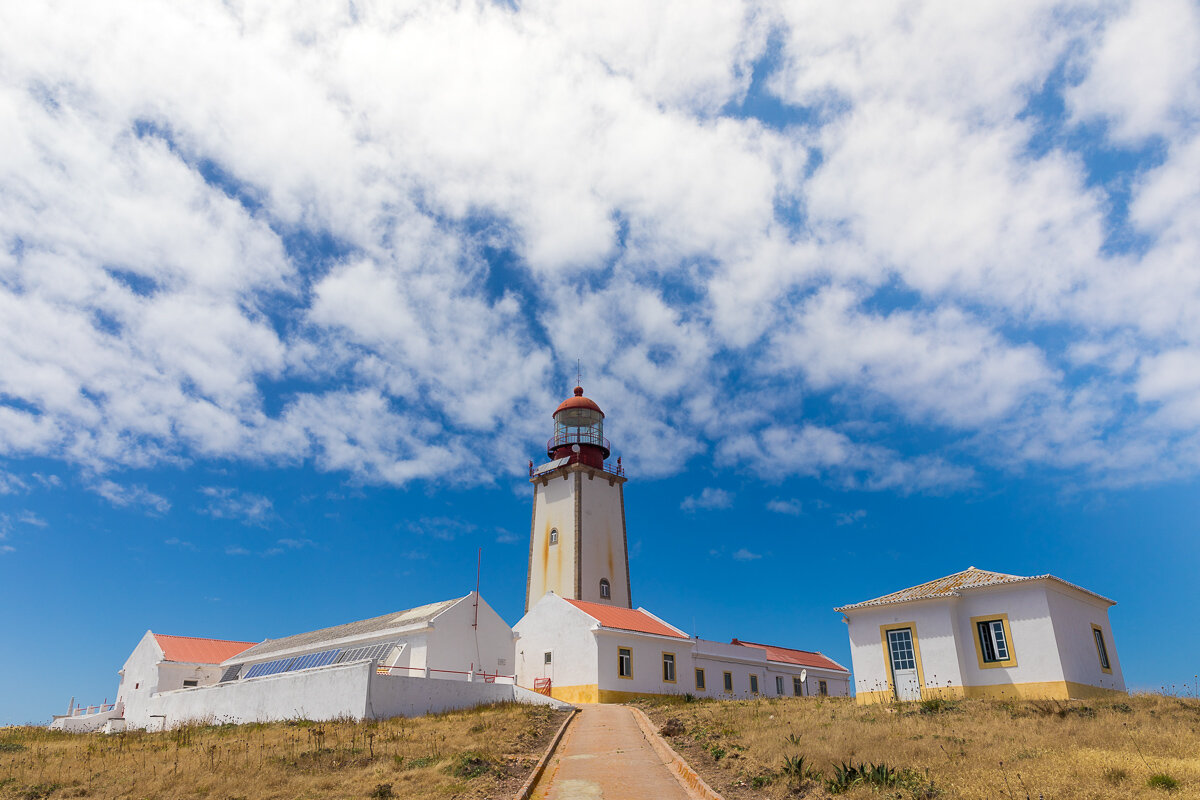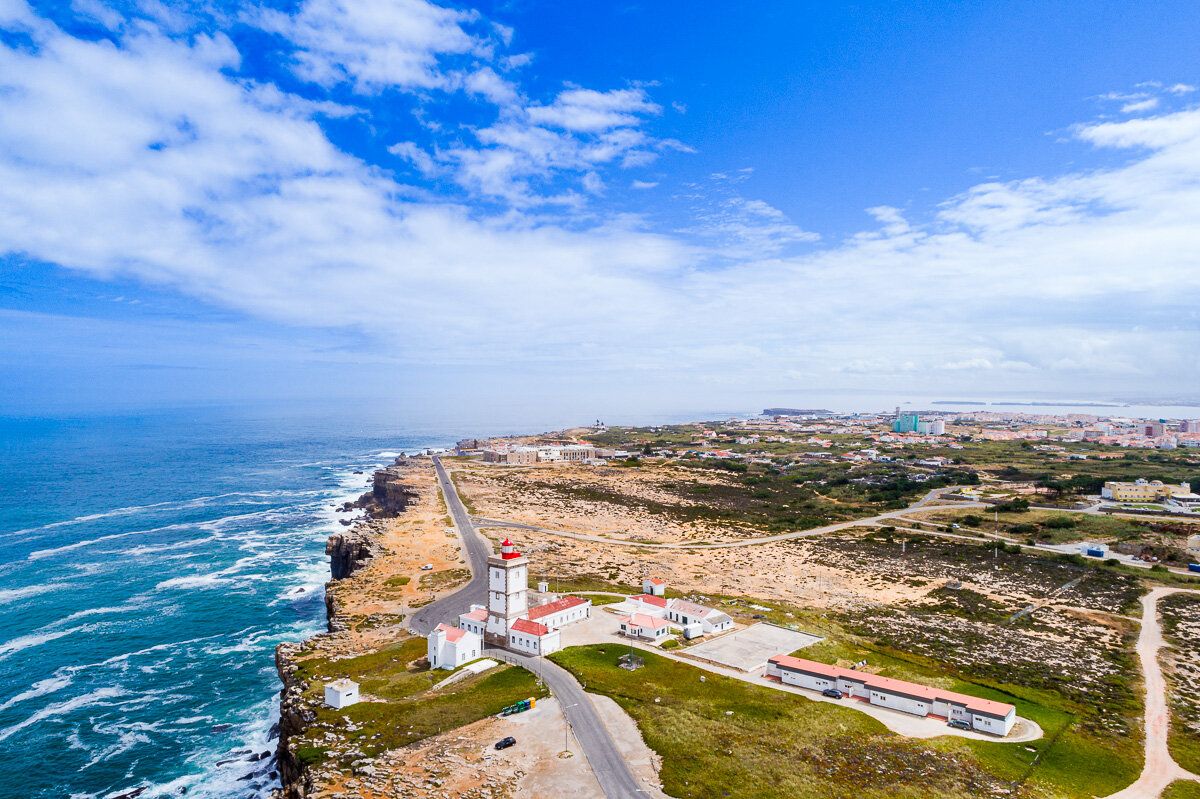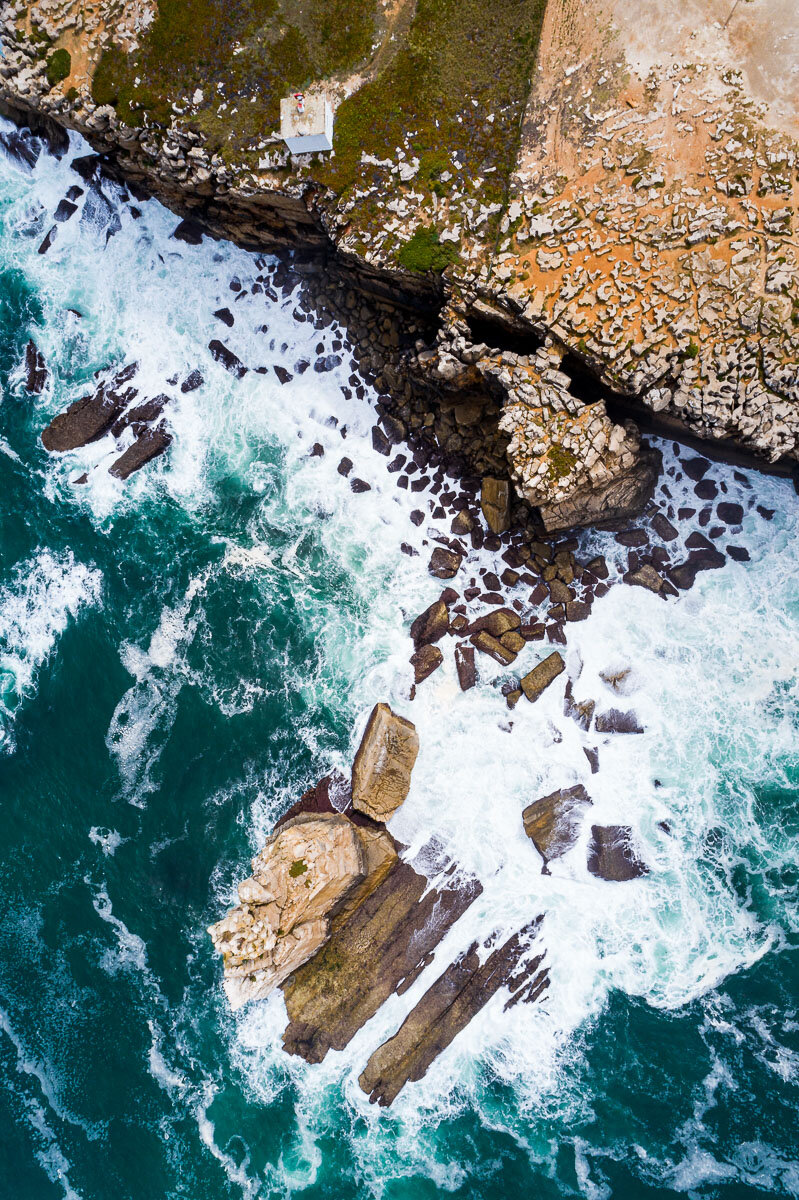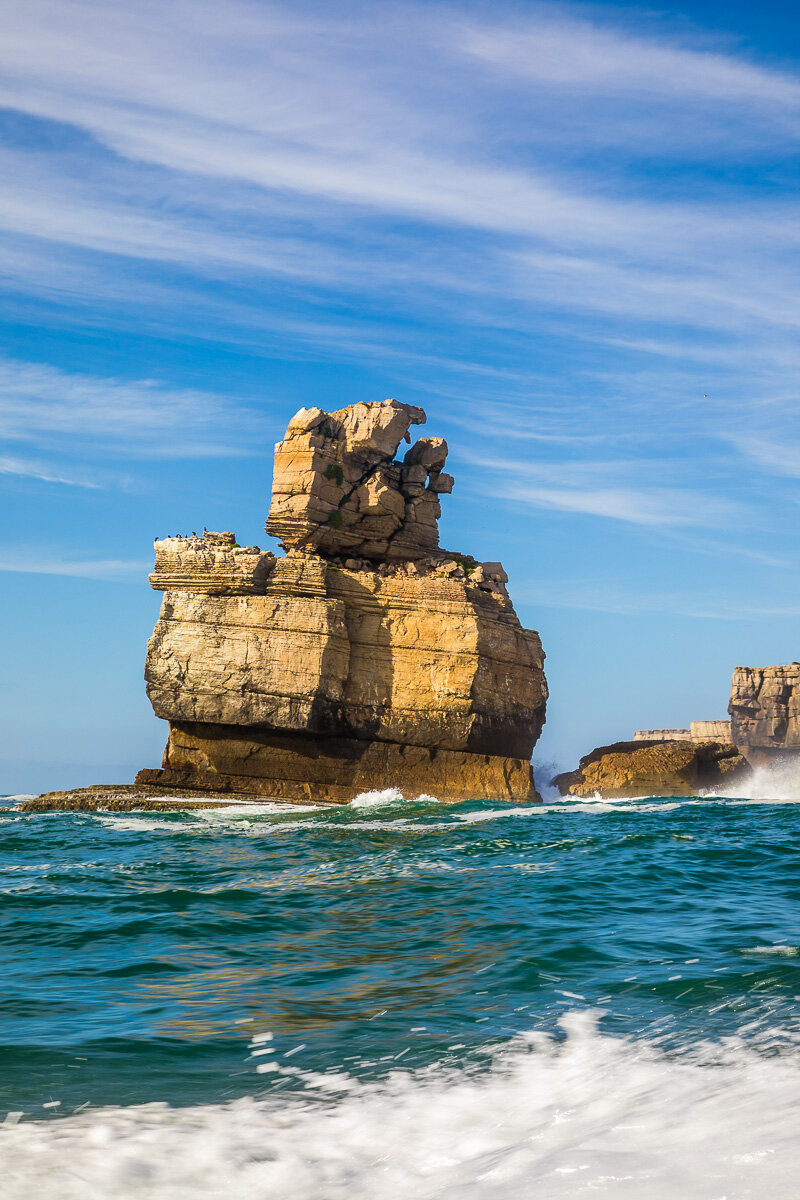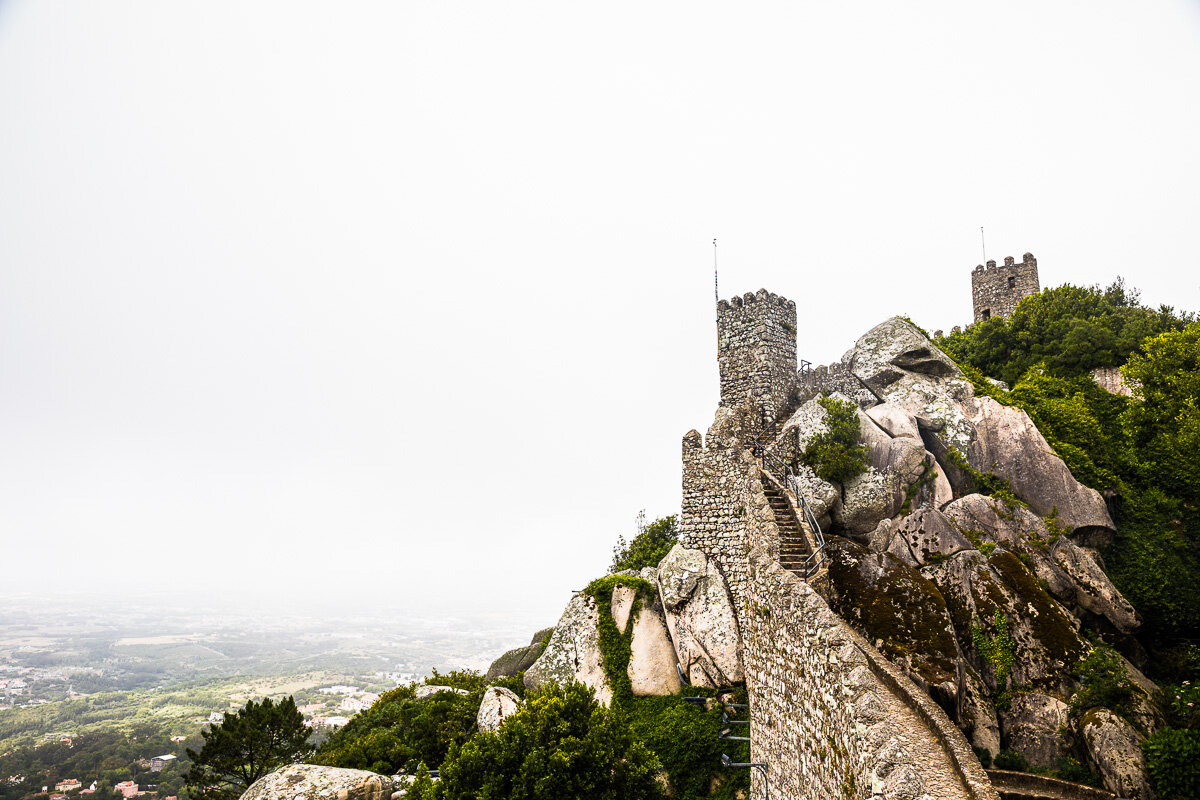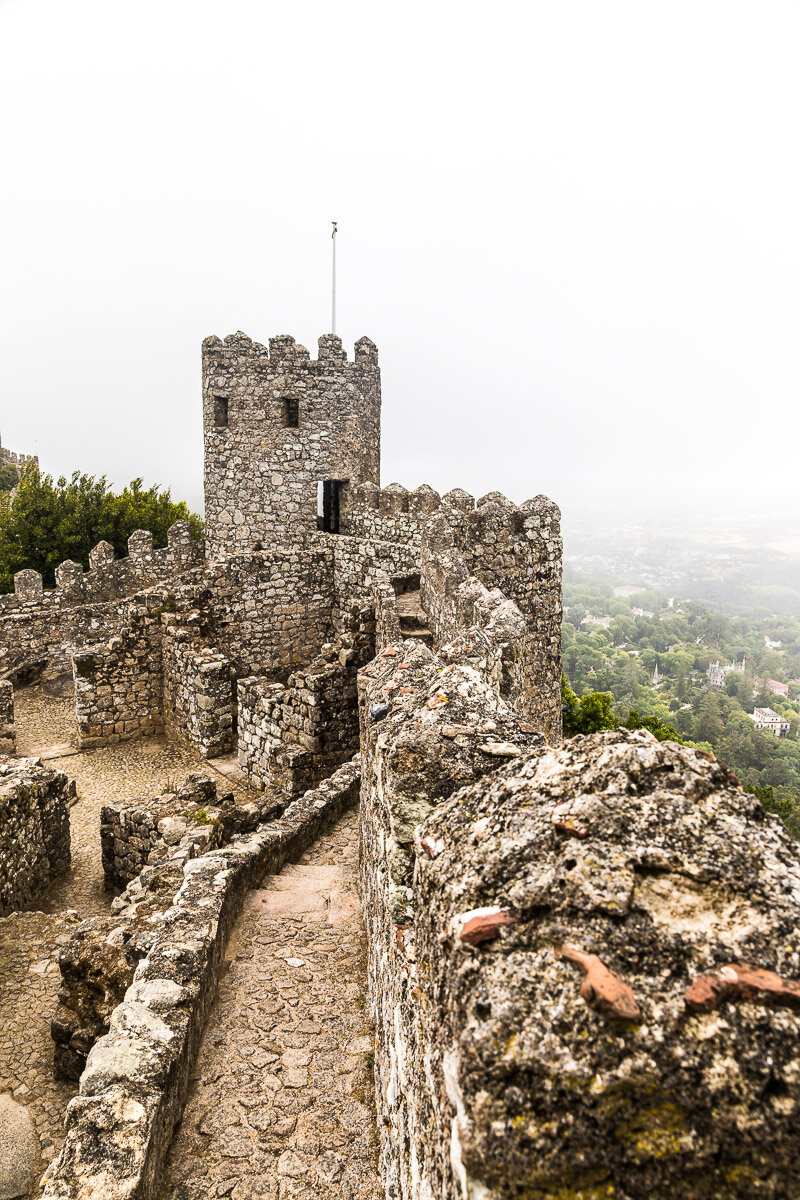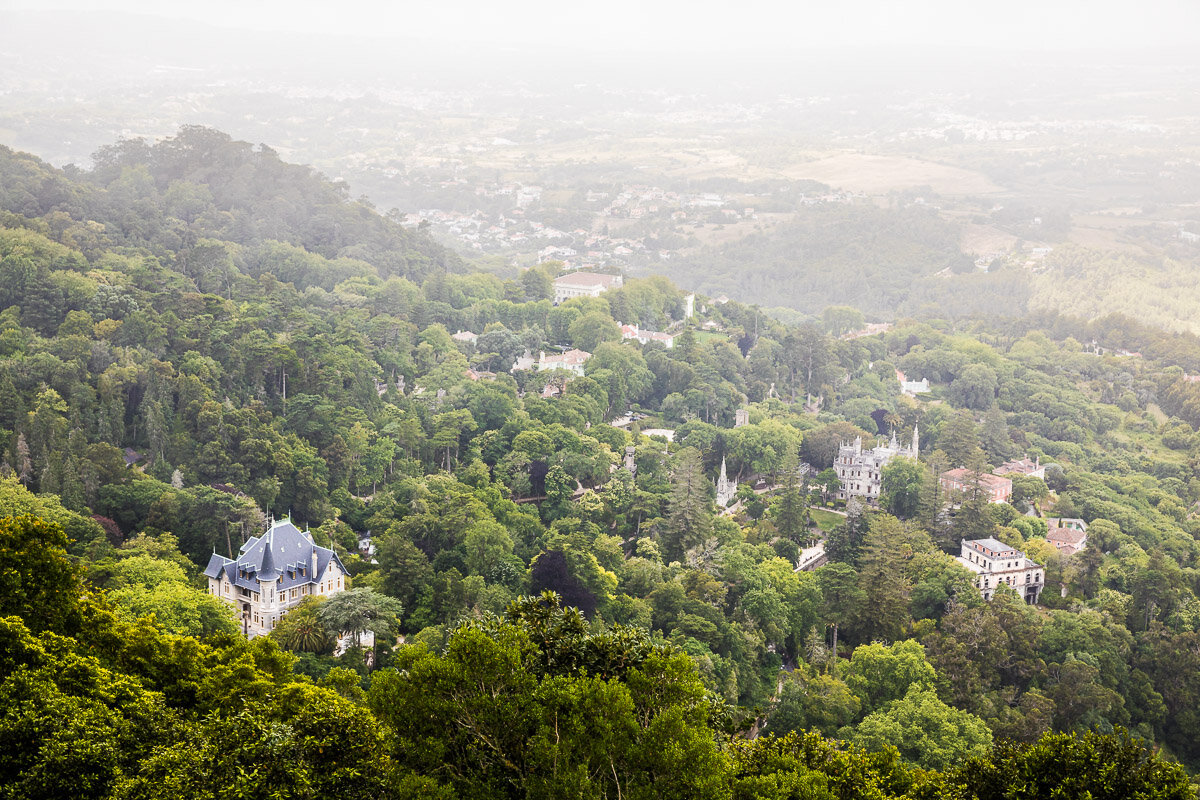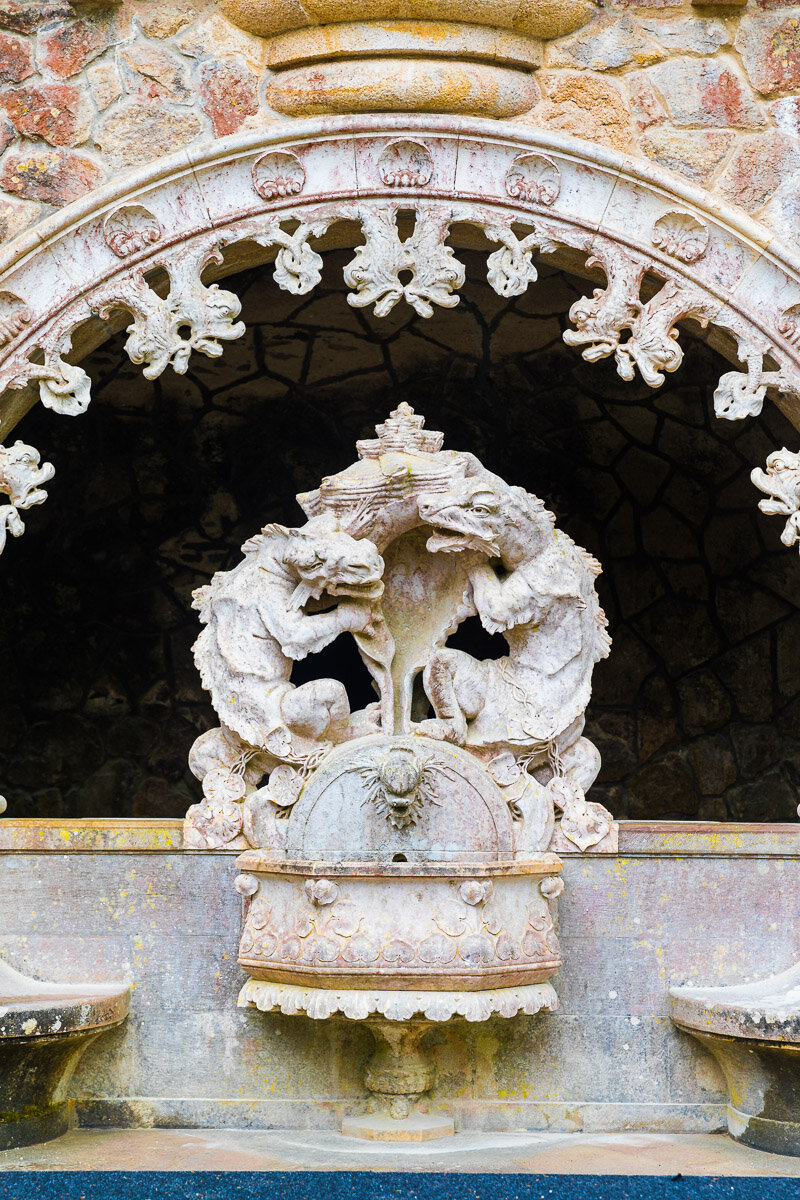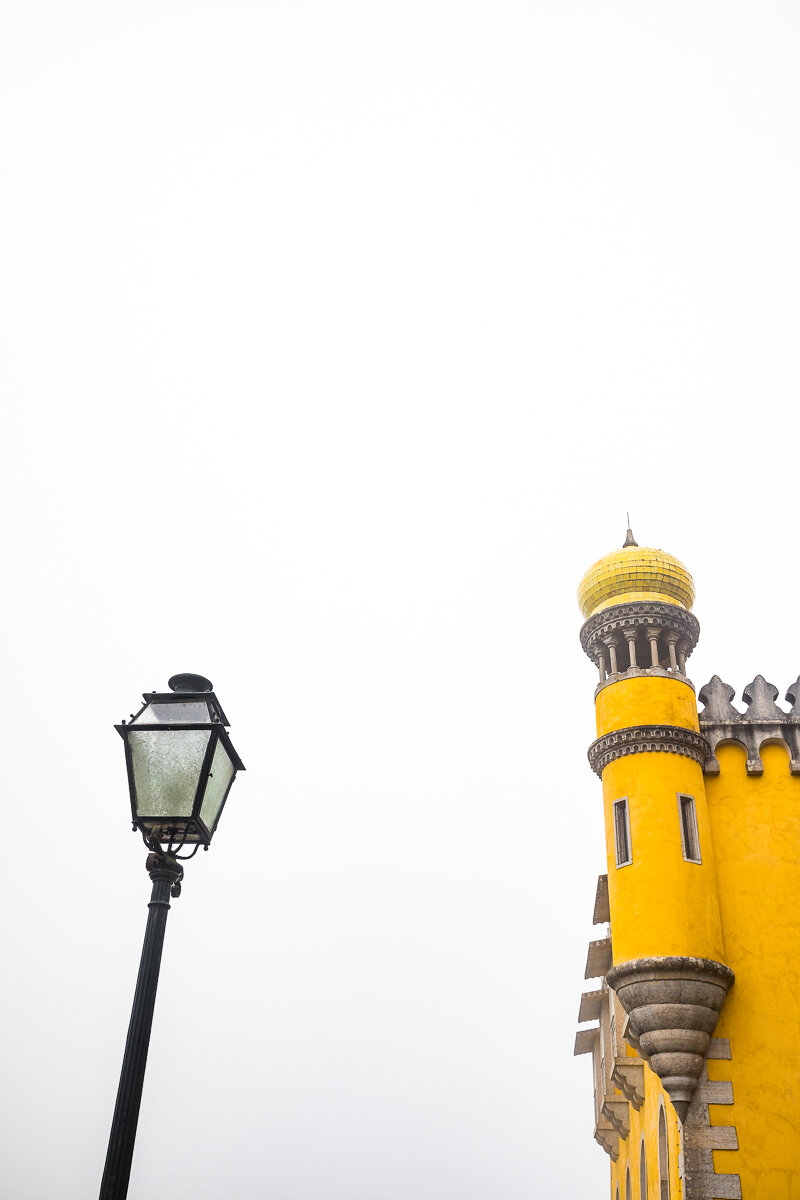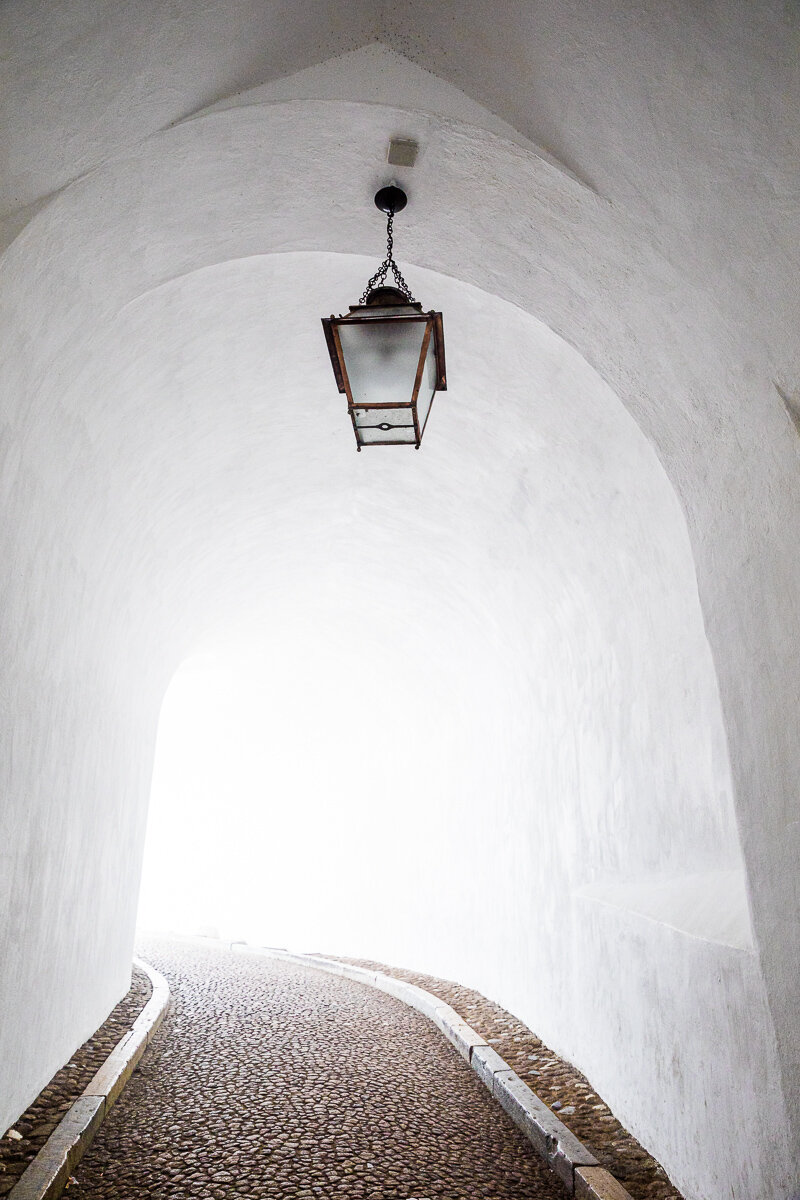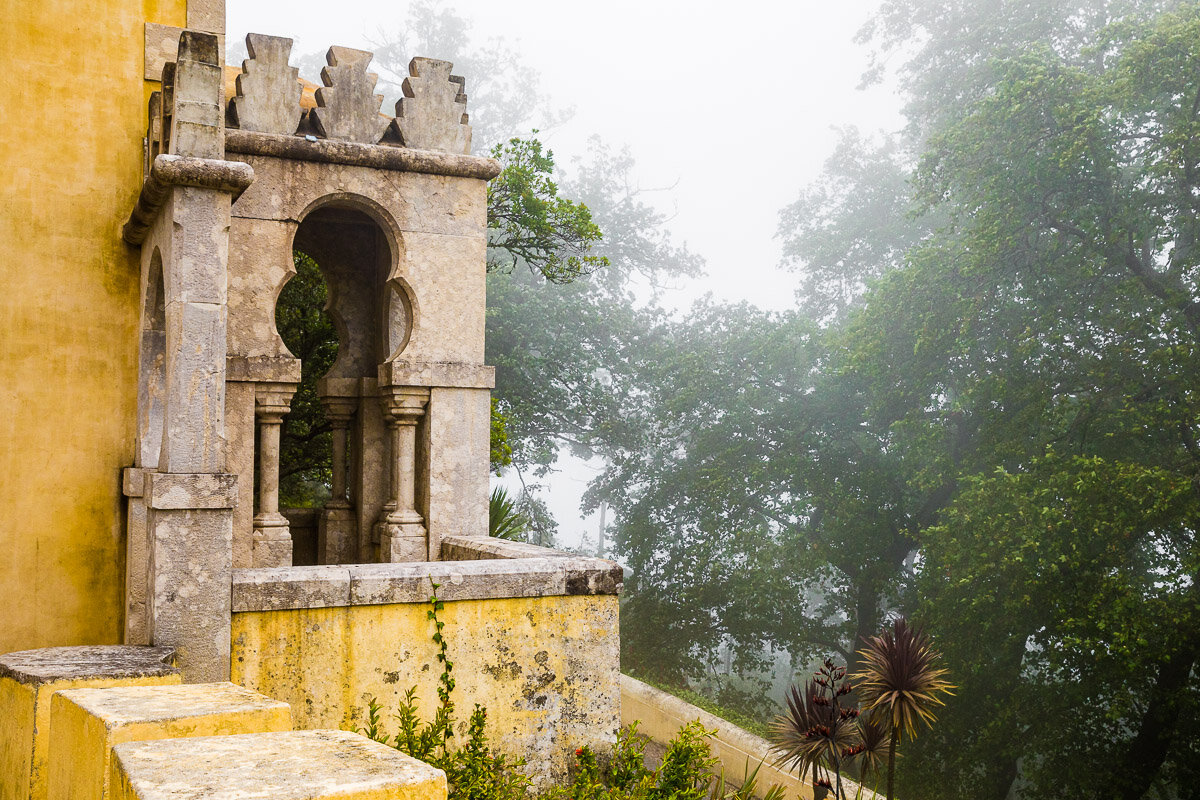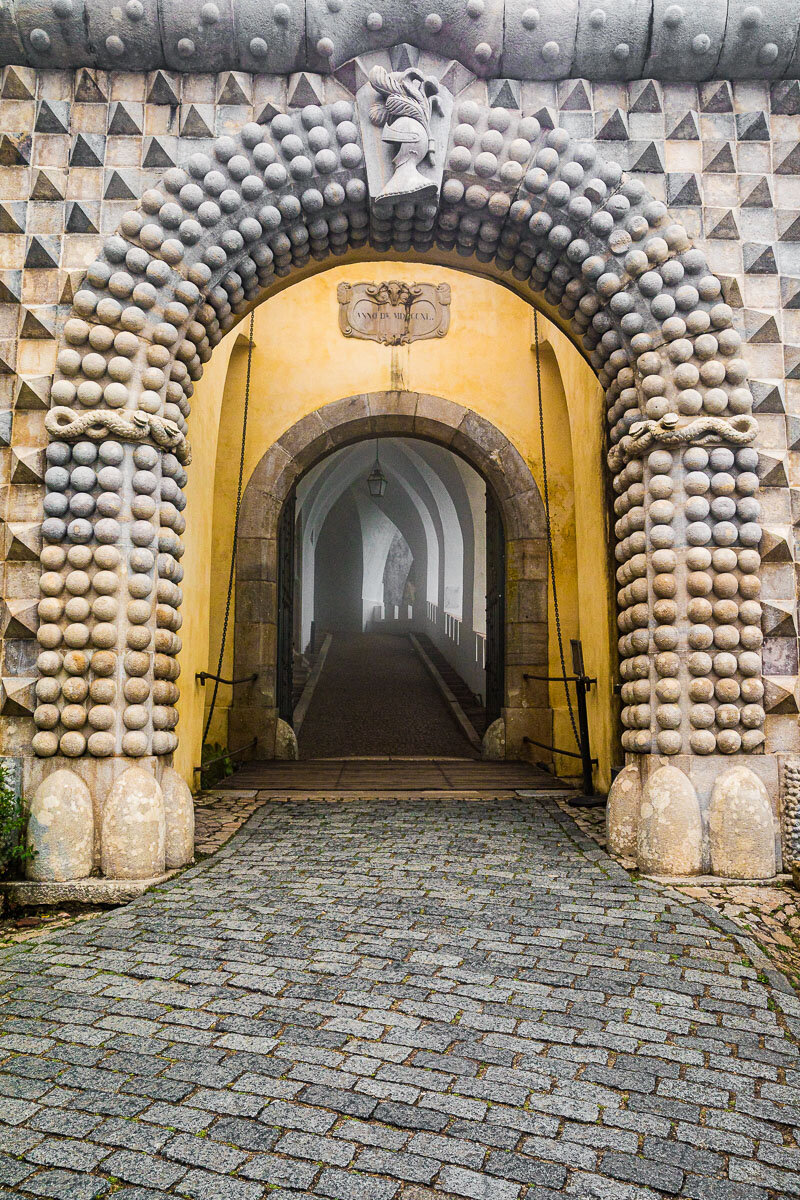The final stop on our roadtrip through Portugal was Aveiro, considered the country’s equivalent of Venice. Aveiro is a small town organised around several canals. The houses are painted in either bright colours or covered in traditional Portuguese tiles. The colourful gondolas are available for tours of the area, like their counterparts in Italy. One of our favourite parts of our stay in Aveiro was the excellent seafood, no doubt caught fresh from the ocean nearby.
Portugal
The Stripes of Costa Nova
From Porto, we drove South to the small beachside town of Costa Nova, where the houses were all similarly decorated in stripes and matching fixtures and fittings. The town is a popular stop for locals and tourists alike, and the striped houses that were originally built as fishing huts have since been converted into trendy holiday homes.
Chapel of the Lord of the Stone
The beaches near Porto are relatively under-explored, and yet contain photographic gems such as the Capela do Senhor da Pedra (Chapel of the Lord of the Stone). We arrived just before sunset, and caught the golden light just before sundown from the air, followed by more traditional images from ground-level. By sunset, we were mostly alone at the beach, a truly unusual occurrence for a place like this!
Porto: An Evening on the Waterfront
Porto is the second largest city in Portugal, known for its tile-covered buildings. The city really comes alive at night, when tourists flock to the restaurants and shops on the waterfront. We were lucky enough to stay at an apartment with a perfect view to the canal, which resulted in some great evening photos. To capture the details of the buildings on the other side of the canal, I used a telephoto lens - and of course, a tripod to keep the shot steady!
Douro Valley
The Douro is one of the largest rivers in Portugal, and flows from Spain to near the city of Porto. It is the world’s oldest demarcated wine region, and a World Heritage Site. It was a change of landscape from our travels through the small medieval towns of Portugal. Douro Valley is a great place to relax and enjoy the vibrant green landscapes, a good glass of wine, and some local olive oil to boot.
Piódão in the Mist
Unfortunately our visit to Piódão was not a particularly lucky one. The town was shrouded in mist throughout our stay, and it rained quite often. Nevertheless, the eerie atmosphere of the part-time ski-destination, part-time sleepy village made for some interesting photos. We were lucky enough to get excellent views out of our hotel room, overlooking the town and the surrounding cliffs.
Visit to Sortelha
Contuinuing on the theme of small medieval towns in Portugal, the village of Sortelha is one of the oldest. Its streets are probably some of the narrowest I saw. A single taxi services the entire town, which is mostly inhabited by retirees and those working in the village’s hotel and restaurant. It is a truly charming little place, which surrounds the ruins of a small castle.
Monsanto's Sunset
I was lucky enough to photograph the sunset over the town of Monsanto from the town’s plaza, half-way up the steep hill to the medieval ruins that sit above the city. The so-called “most Portuguese village” is truly unique, mixing natural rocks and stonework for a truly unique architectural style. I hope you enjoy the fantastic light in these images as much as I have.
The Most Portuguese Village
Monsanto, deemed “the most Portuguese village”, is a town of small red-roofed houses interweaved with enormous rocks. Its narrow streets climb up the sides of a small cliff, from which you can gain a spectacular view of the village. The top of the cliff is also the grounds of the ruins of the town’s medieval past, with a couple of buildings still left standing.
A Bird's-eye View of Marvão
The white buildings of Marvão, together with its medieval fortress and the surrounding farmland, make for incredible aerial images. I seized the opportunity to fly the drone over this stunning medieval town a couple of times, resulting in some amazing landscapes.
Some Portuguese Countryside
The town of Marvão is surrounded by typically Portuguese countryside. Even in the stark afternoon light, the landscape comes alive with the yellows and greens of the endless farms extending in every direction. In retrospect, I would have liked to photograph a sunrise over these fields, as I imagine the softer yellow would have made for even more breathtaking views.
A Walk Through Marvão
Marvão is another small medieval town nested within the Portalegre district. It is known for its white buildings with colourful trimmings, and the local castle. I enjoyed a peaceful couple of days in this town. Here are some of my favourite images from my meanderings through its streets…
Óbidos from Above
Perhaps the most spectacular views of Óbidos are from above. During my visit, I made the most of the birdseye views from the city and of the city. There are two ways to capture these images: by walking along the medieval walls that envelop the town, and by flying your drone from outside the city for a view of the castle and its surroundings. Here are some of my favourite images from both viewpoints.
The Cobbled Streets of Óbidos
Óbidos is a small medieval town to the north of Lisbon. It provides an interesting mixture of medieval fortress walls encapsulating the city, where white buildings with colourful trimmings are nestled between narrow cobbled streets. The progression of the city through the ages is clear in its eclectic architecture.
Baleal Island Landscapes
Baleal Island, a small drive away from Peniche, is an unusual island. Not only is it connected to the mainland by a thin stretch of road, it also sits atop unusual rock formations to either side. This is a popular sunset spot for locals and tourists alike. There are many spots to sit peacefully by the coast and watch the sun go down over the sea, colouring the white village and its layered rocks as it goes.
A Fort in the Atlantic Ocean
Just a short boat ride from Peniche, on the coast of Portugal, lies the Berlenga Grande Island. The island is famous for its red fort, sitting in the middle of the Atlantic Ocean and connected to the island by a narrow bridge. The Fort of São João Baptista das Berlengas was originally built as a monastery, from which monks could assist the regular shipwrecks in the area. However, the plan soon proved insurmountable - the monks regularly contracted diseases, were unable to contact the mainland, and were attacked by pirates. The ruins of what was once the monastery were restored as the fort we see today, which is now open for visitors in the Summer months.
Exploring Berlenga Grande Island
Berlenga Grande Island is part of an archipelago, a short boat ride away from the seaside Portuguese town of Peniche. Although it is known for its fort, it is worth exploring other parts of the island itself - including a view to the lighthouse and the small beaches caved out along the coast.
Cape Carvoeiro
Cape Carvoeiro sits at the westernmost point of Peniche, perched over the Atlantic Ocean. We visited this spectacular location on the way to Peniche, and then again on the way to the Berlenga Islands. The wind was suprisingly calm on that day, which provided an excellent opportunity to fly the drone over the area and get a bird’s eye view of the place.
Castle of the Moors
The oldest of Sintra’s six castles and palaces open for visitation, the Moorish Castle originally dates back to the 9th Century. It was built as a fortified observatory, and sustained the test of time - through the Christian Crusader invasion, a fire, and two earthquakes. In the 19th Century, it was restored to its former glory by the Portuguese monarchy. To this day, it provides stunning views over the other palaces of Sintra and, on a less foggy day, the coastline beyond the town.
A Foggy Day in Sintra
Sintra is a small town, surrounded by castles. It is where the Portuguese monarchy used to spend their holidays away from Lisbon, bringing their sumptuous palaces and gardens along with them. Two of the palaces we explored during our visit to Sintra on a very foggy day were Quinta da Regaleira and the National Palace of Pena. The national palace was almost entirely shrouded in mist, giving an eery atmosphere to the place.


